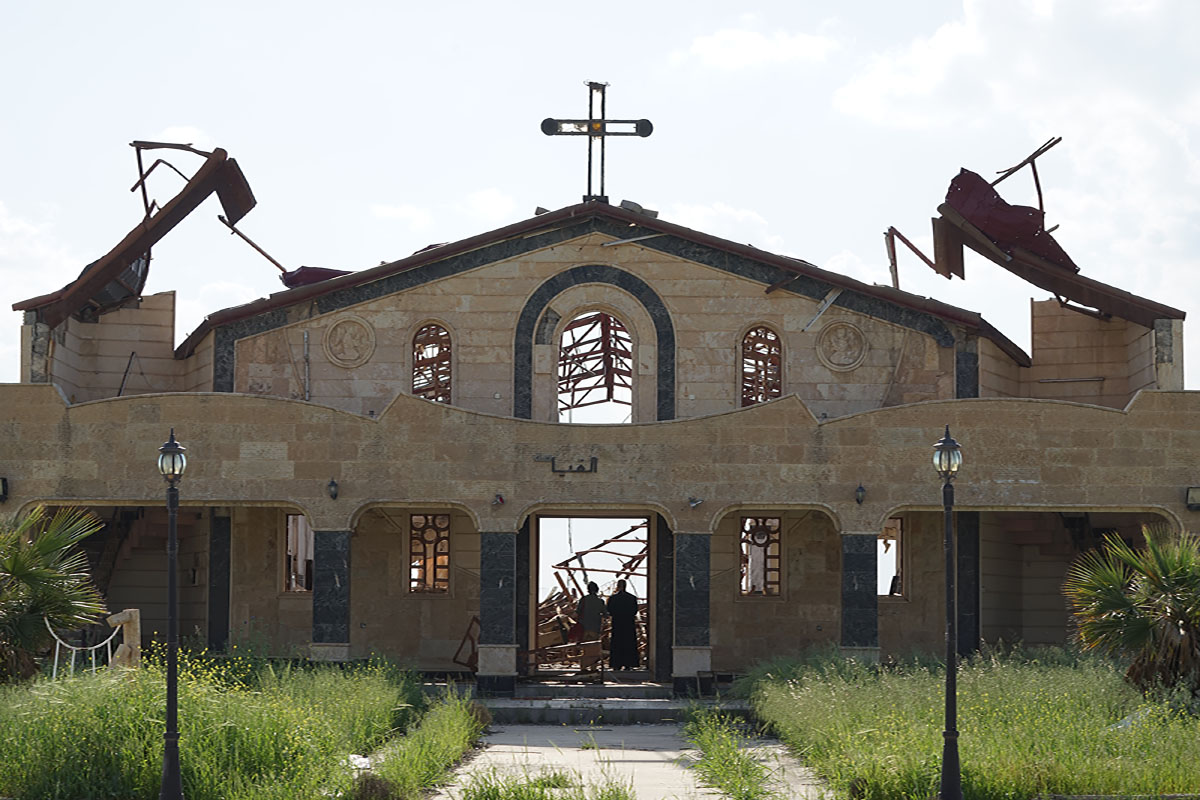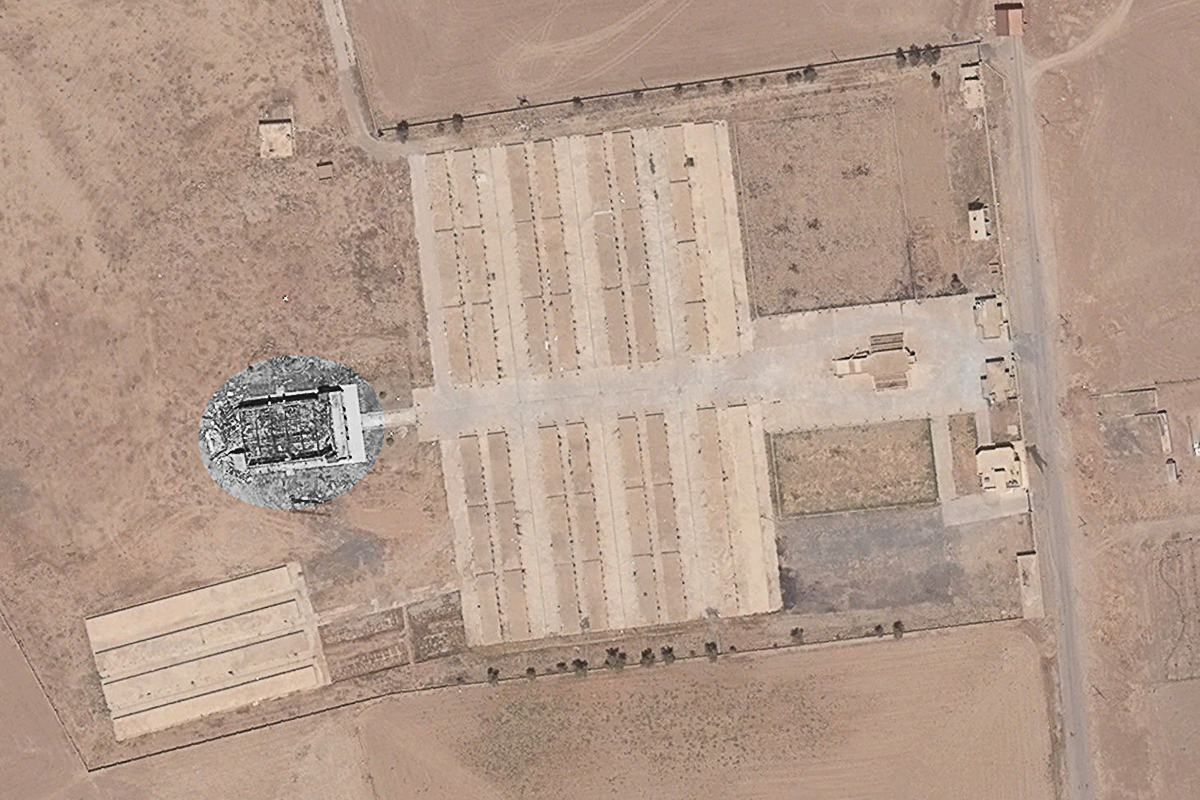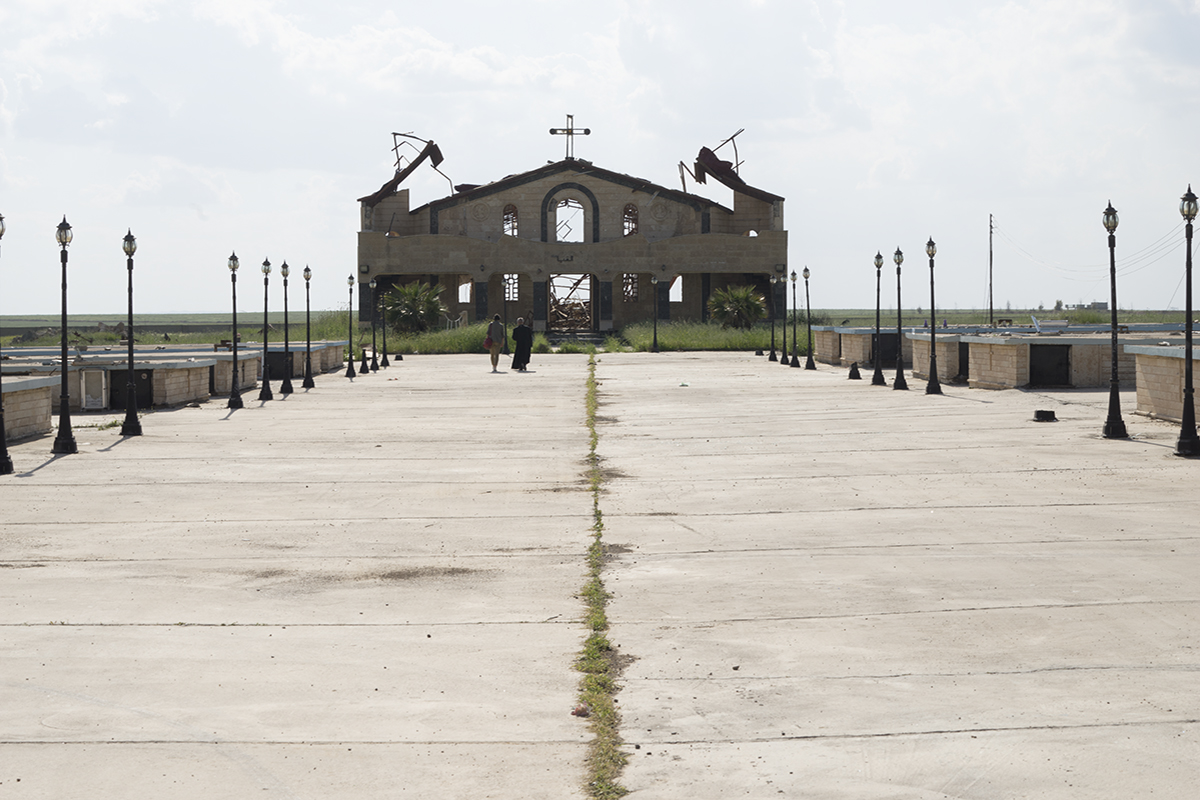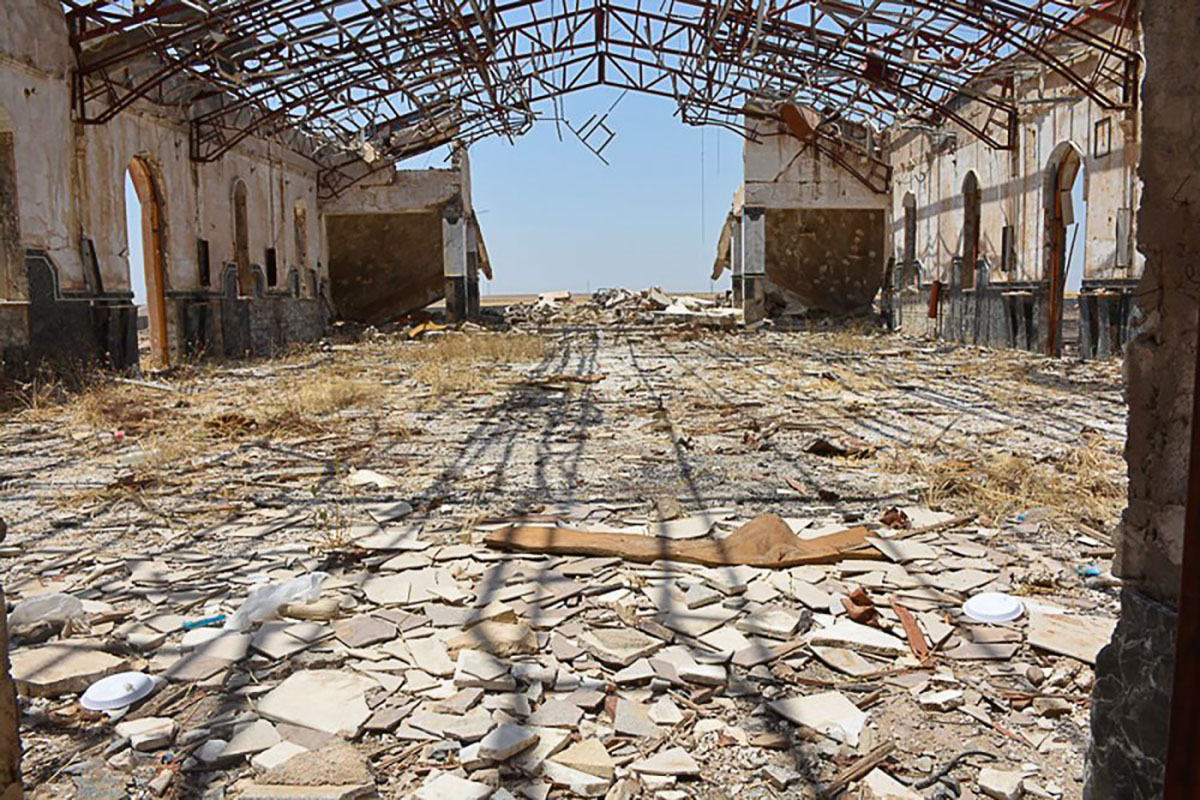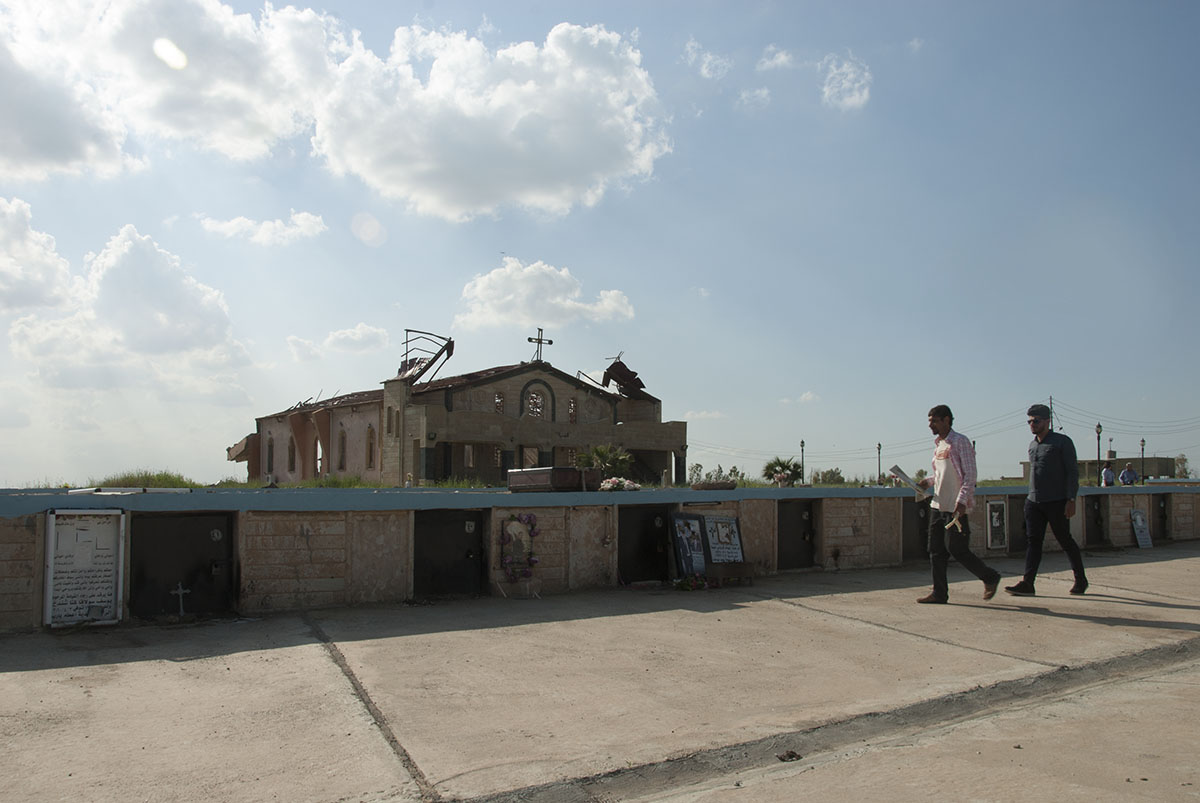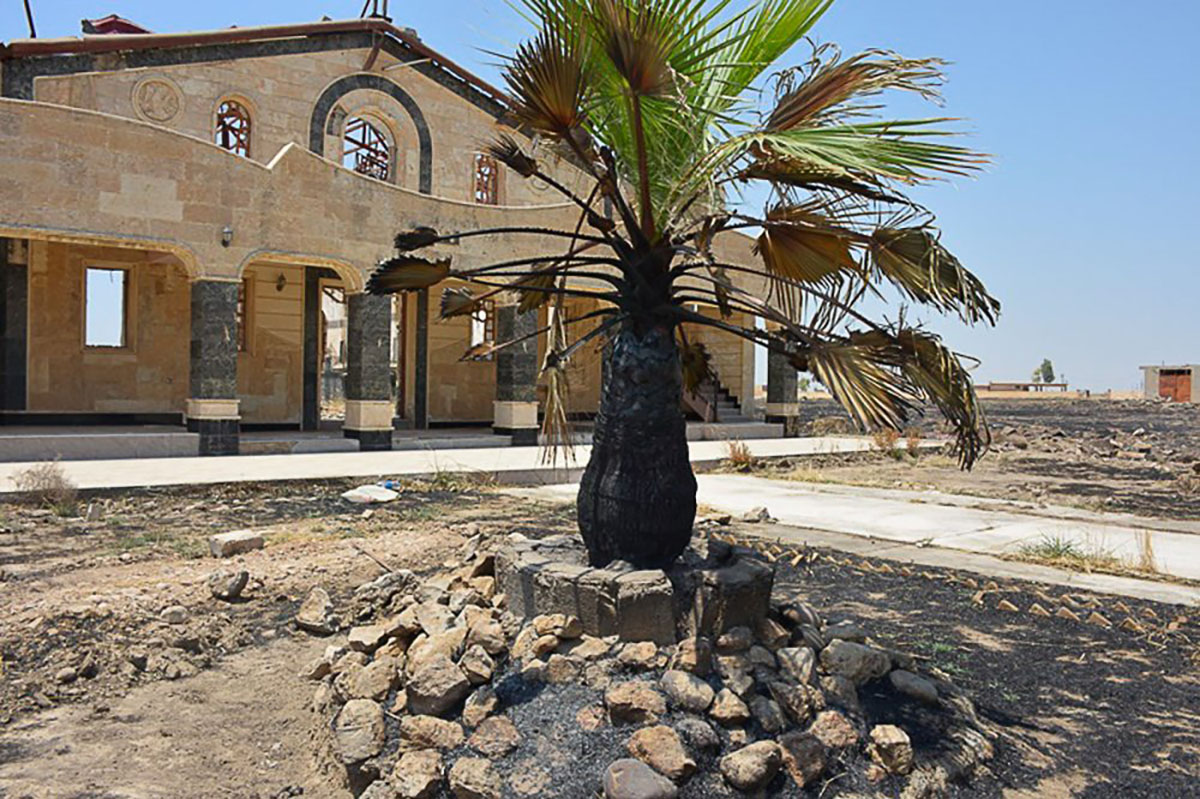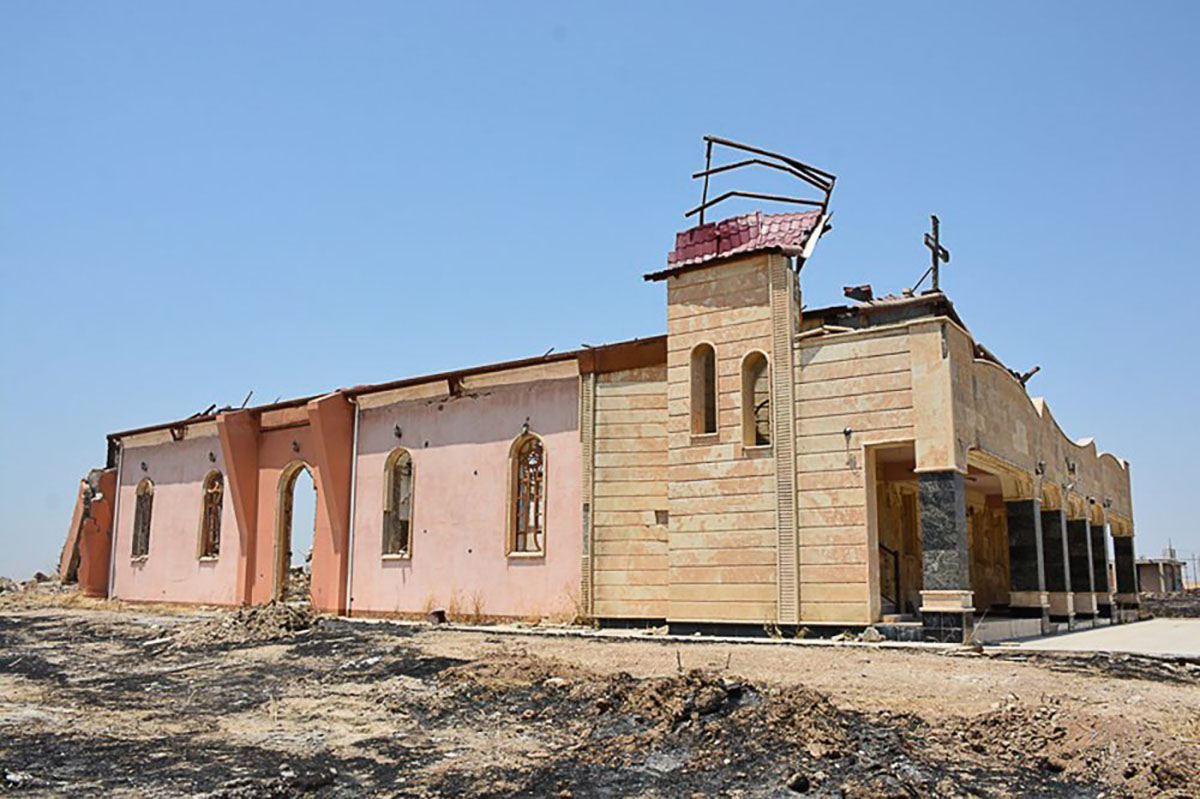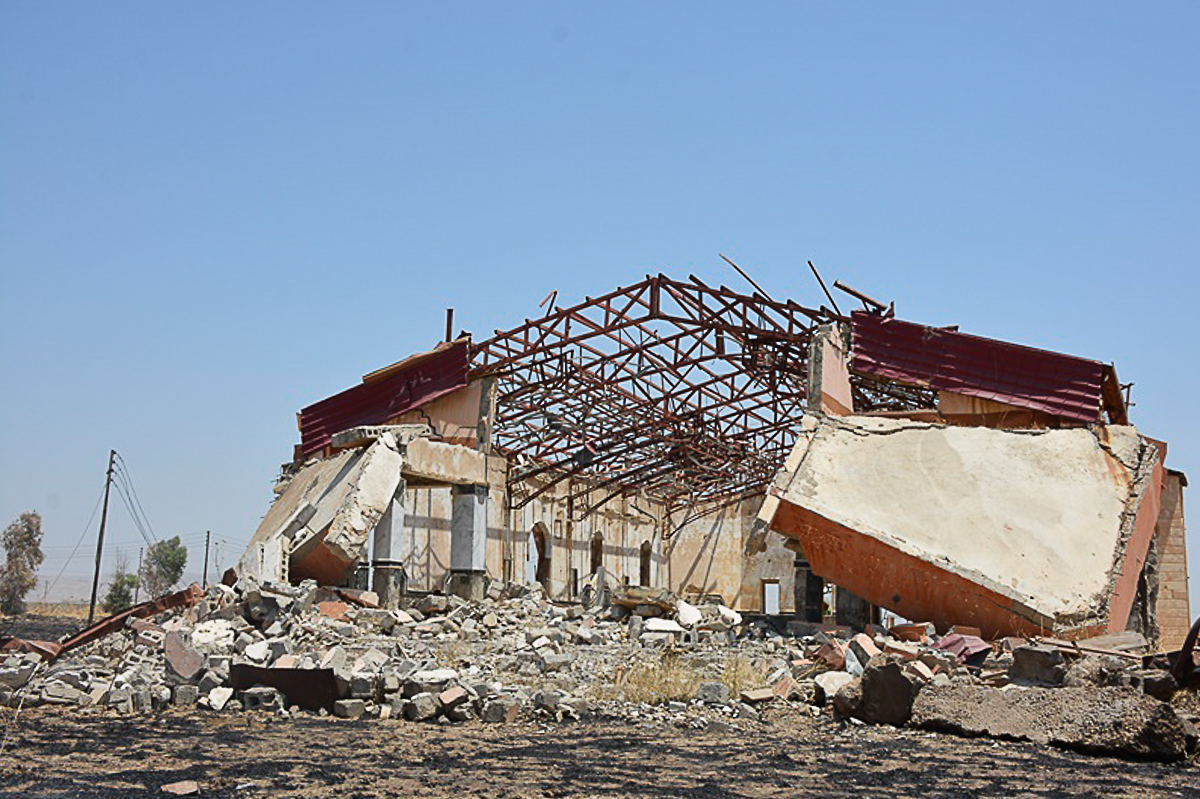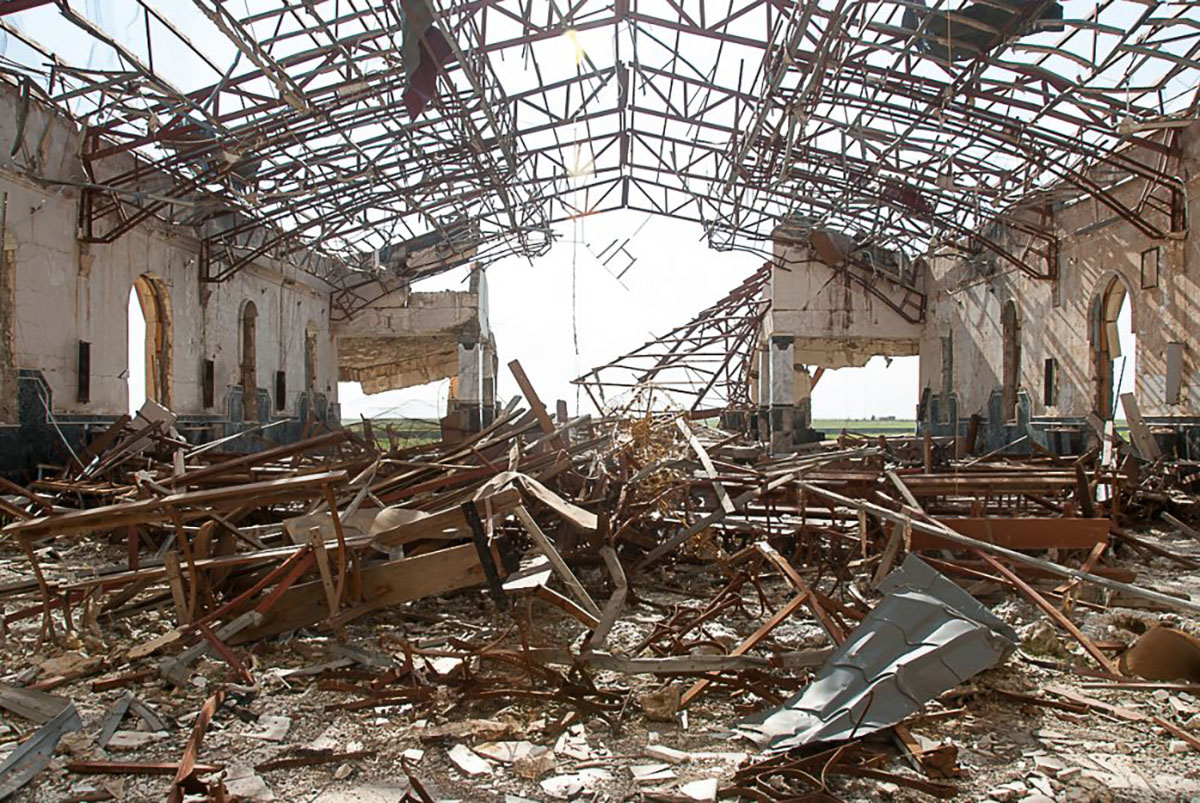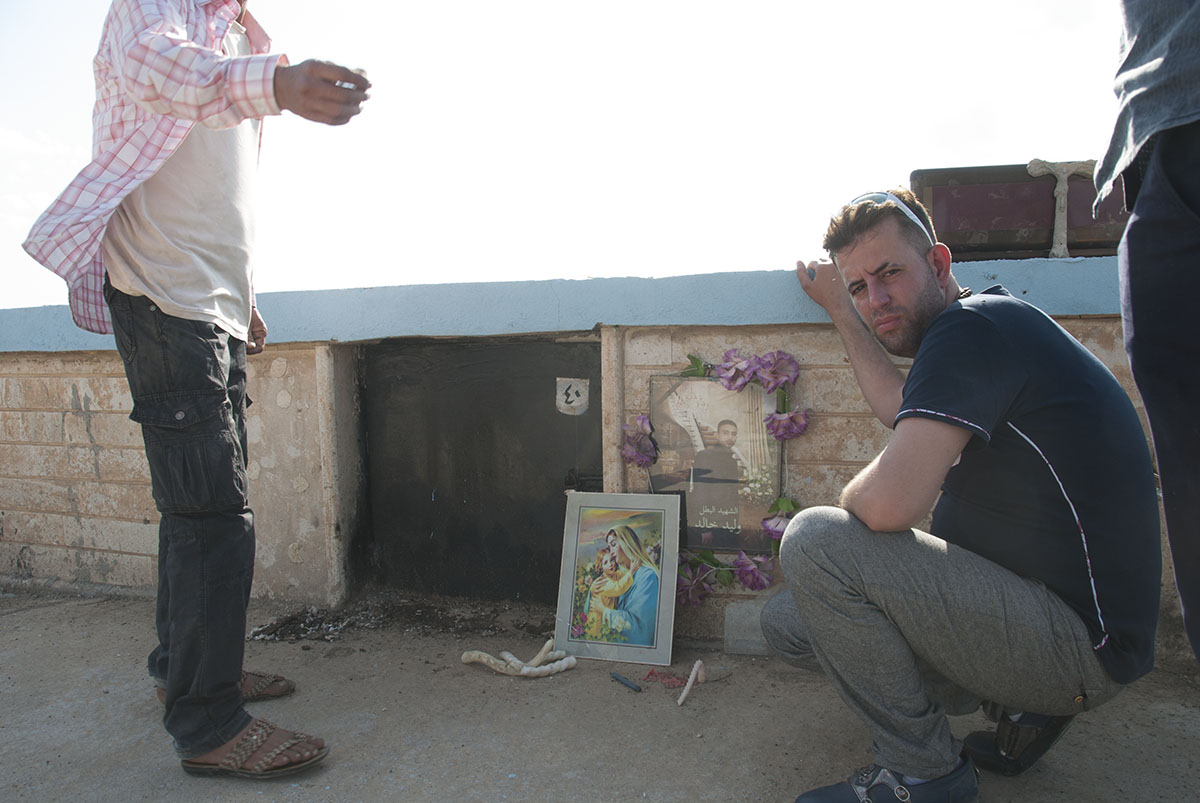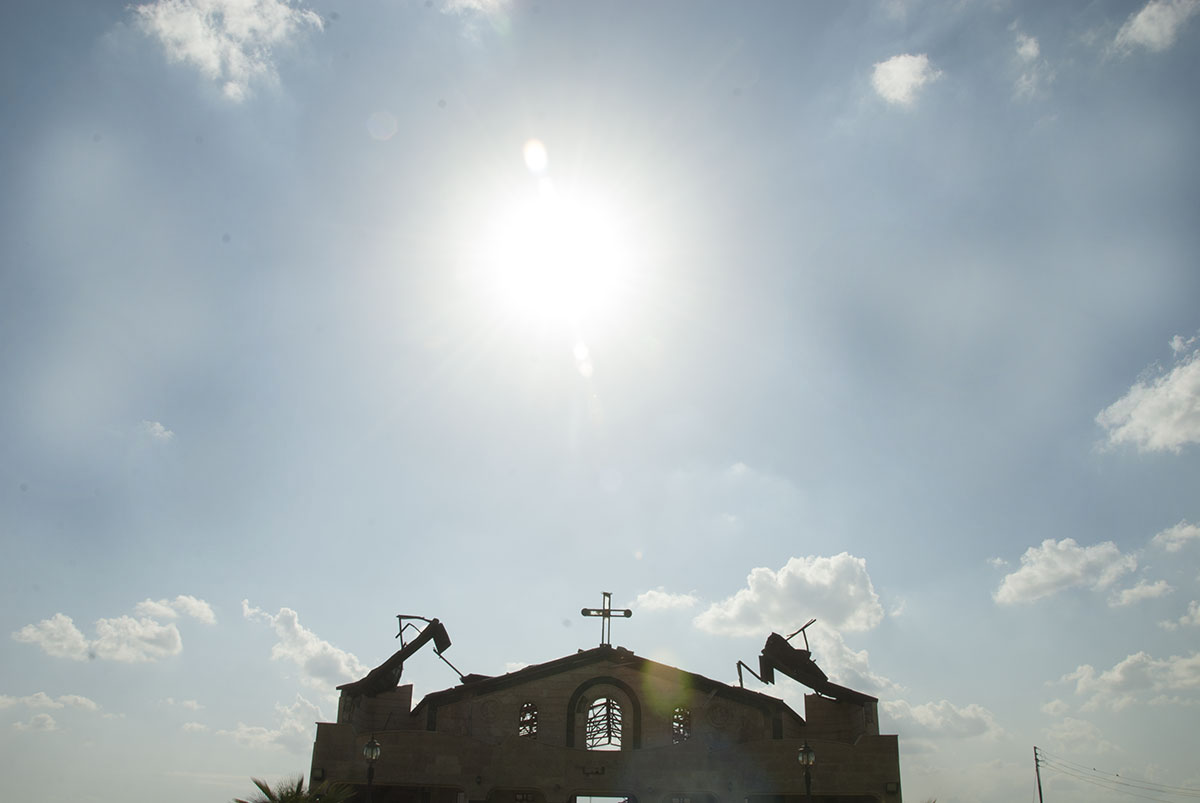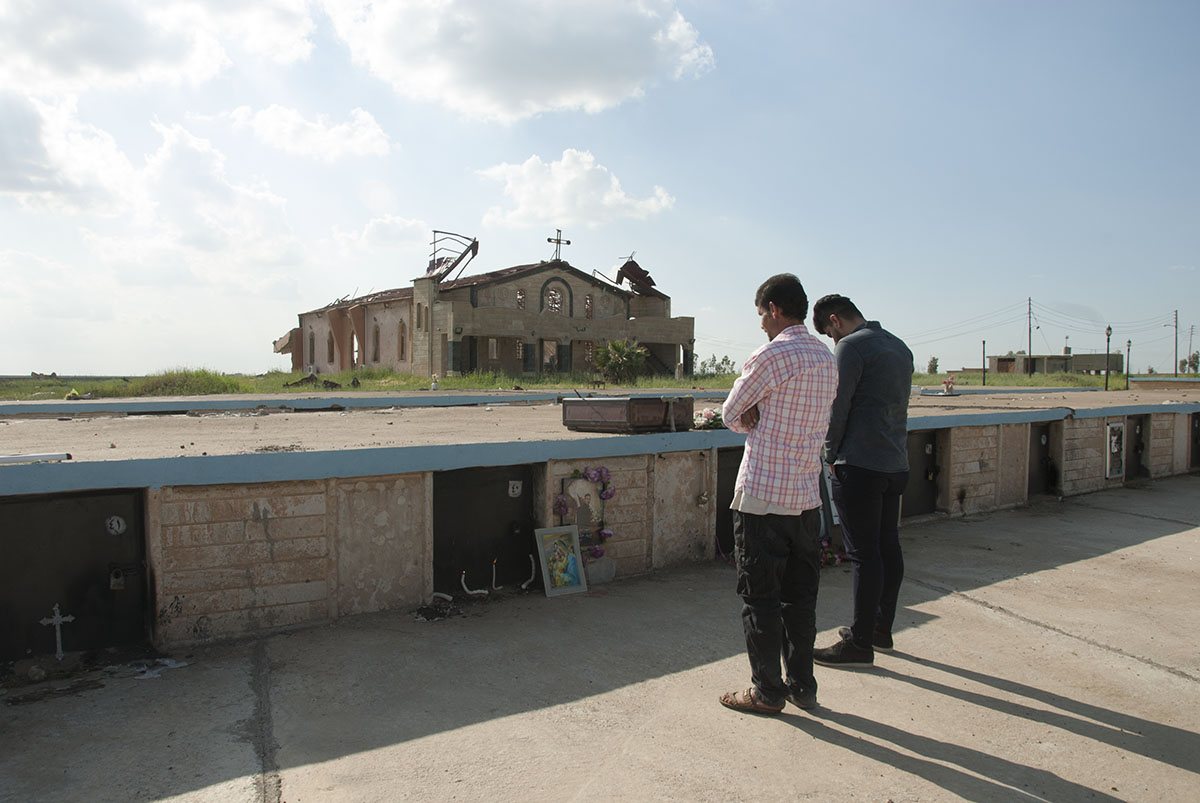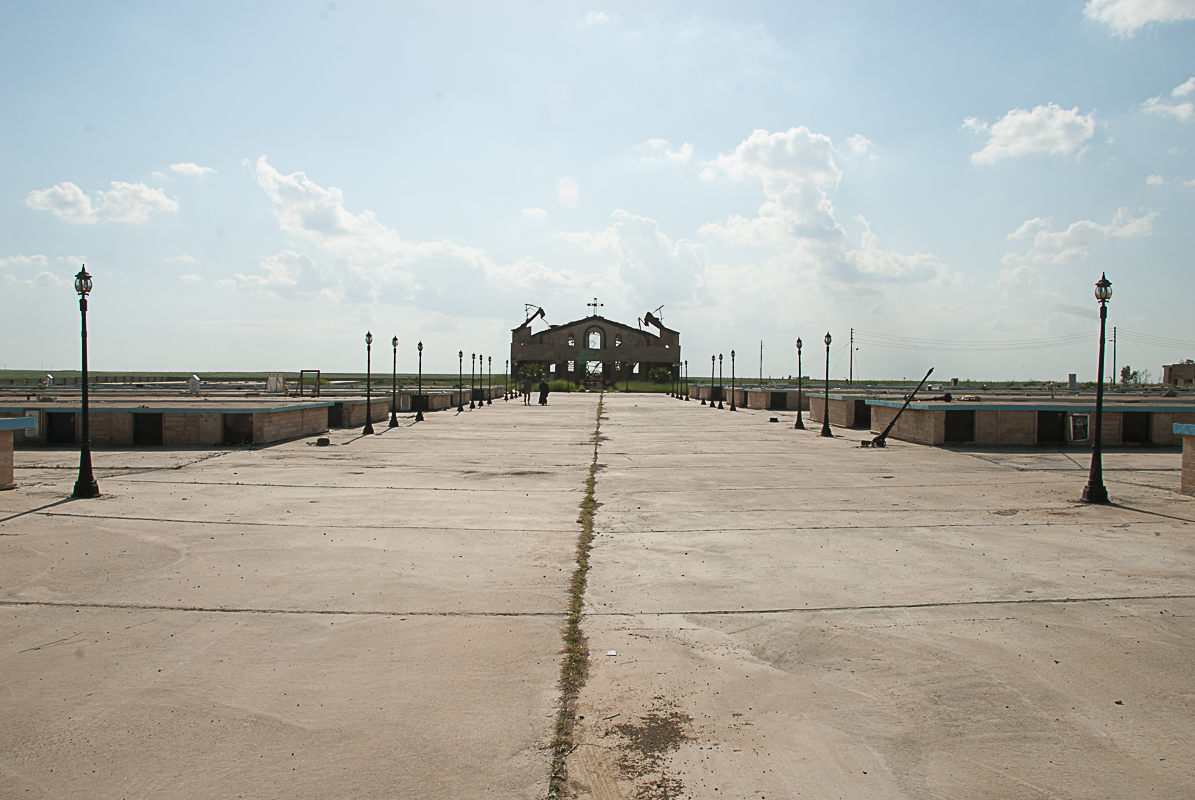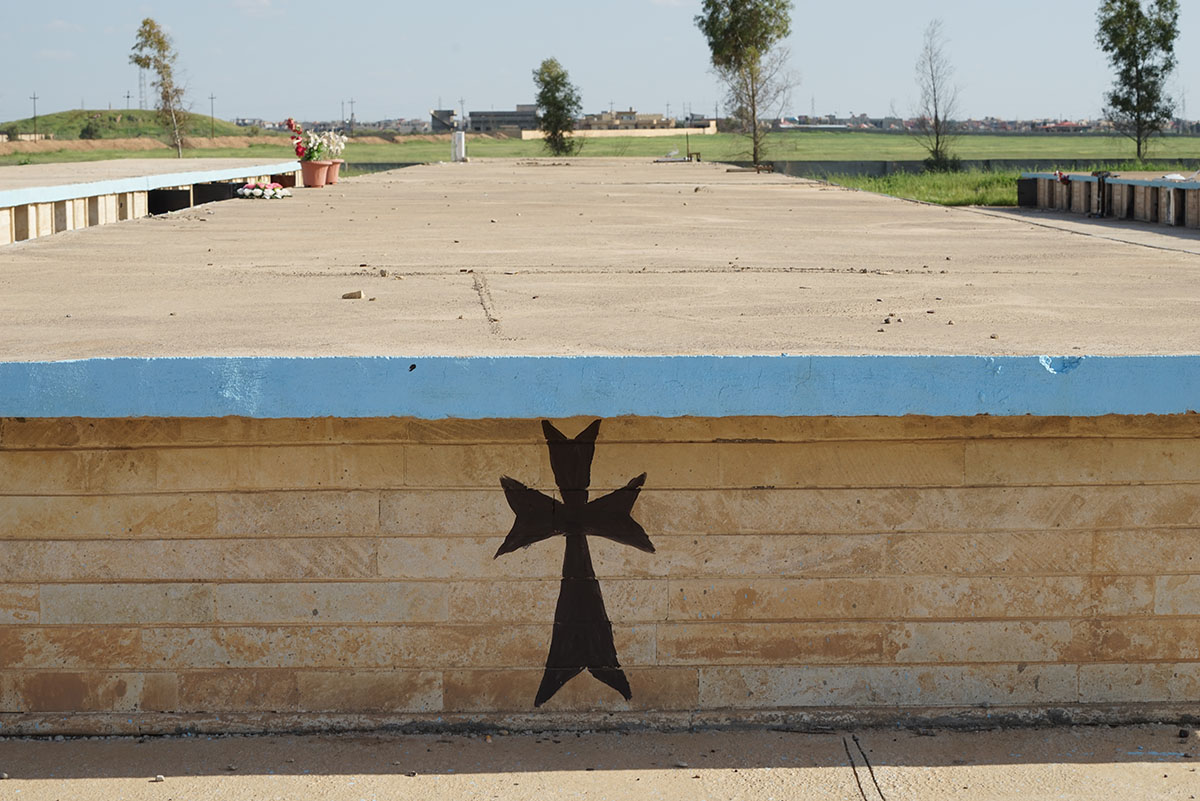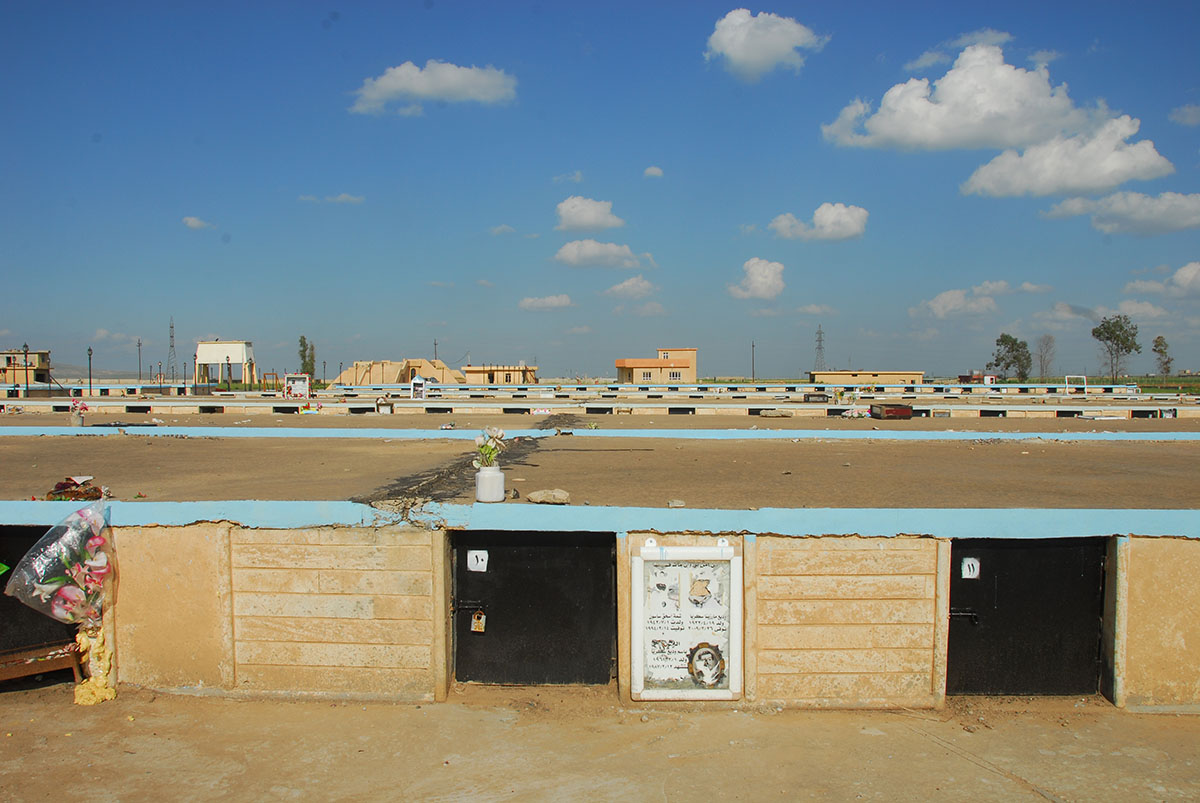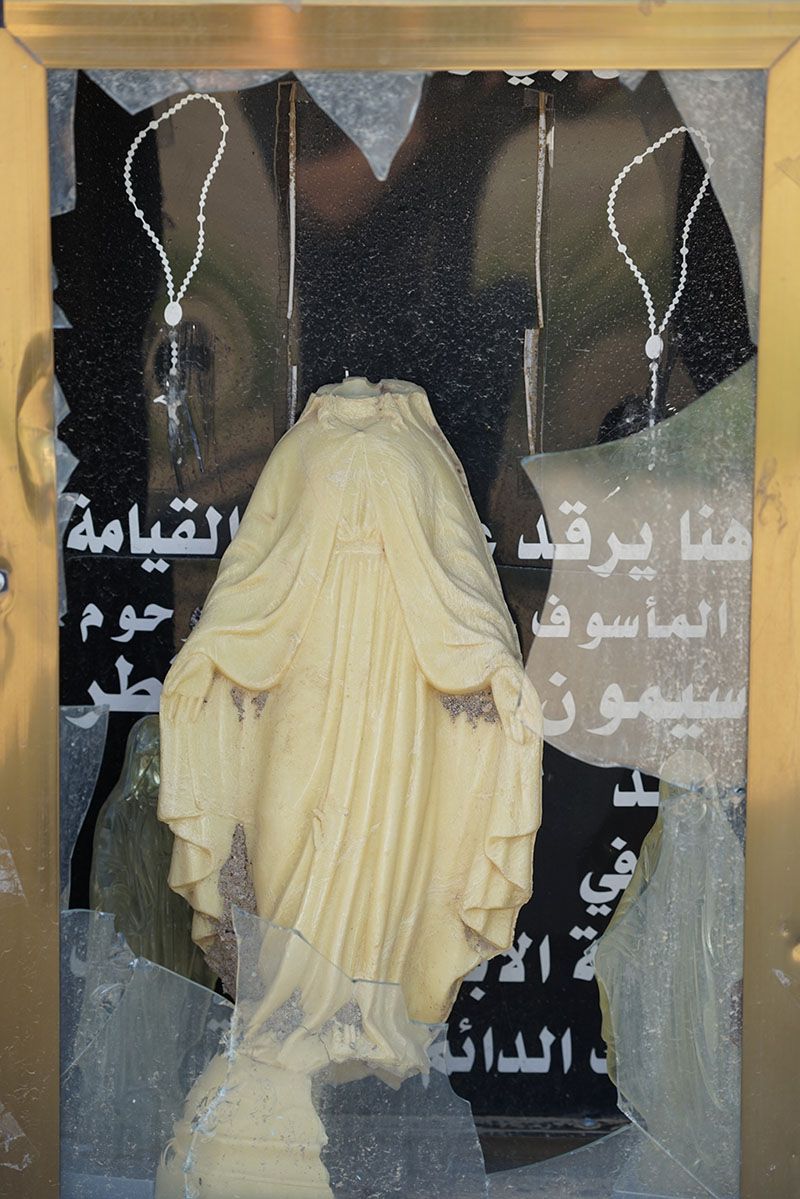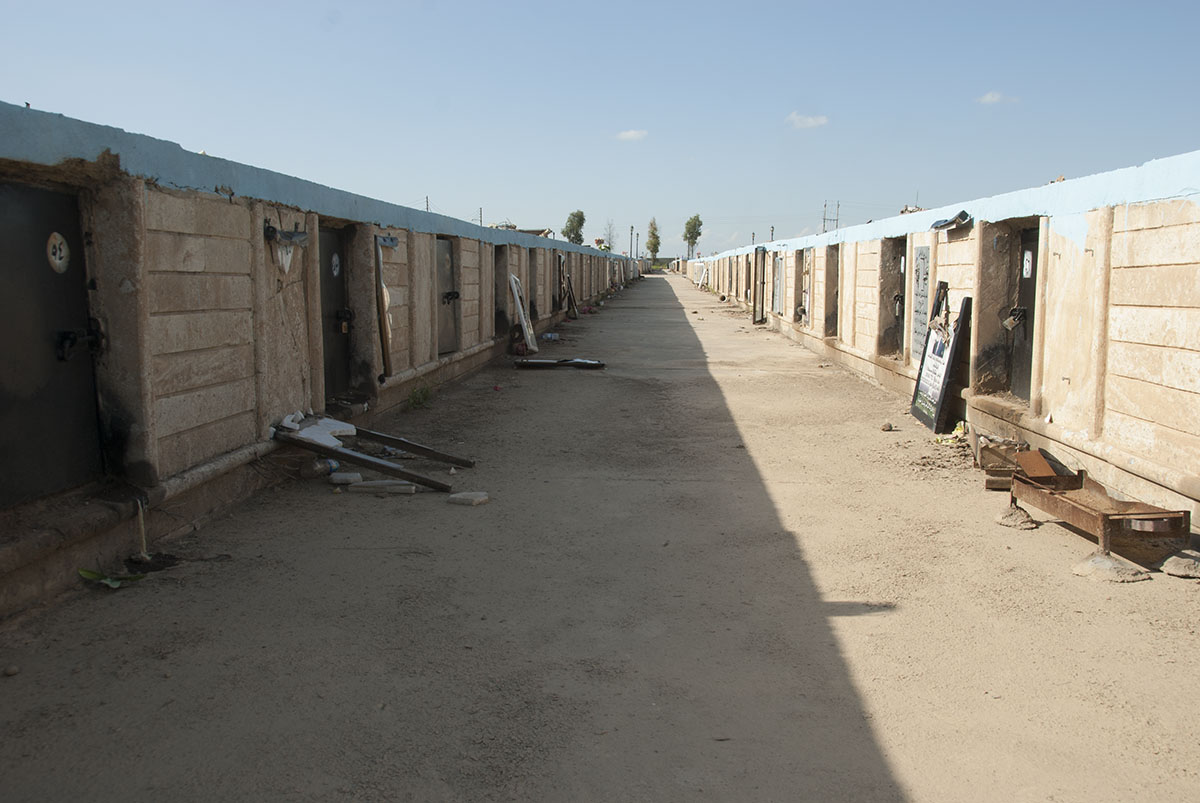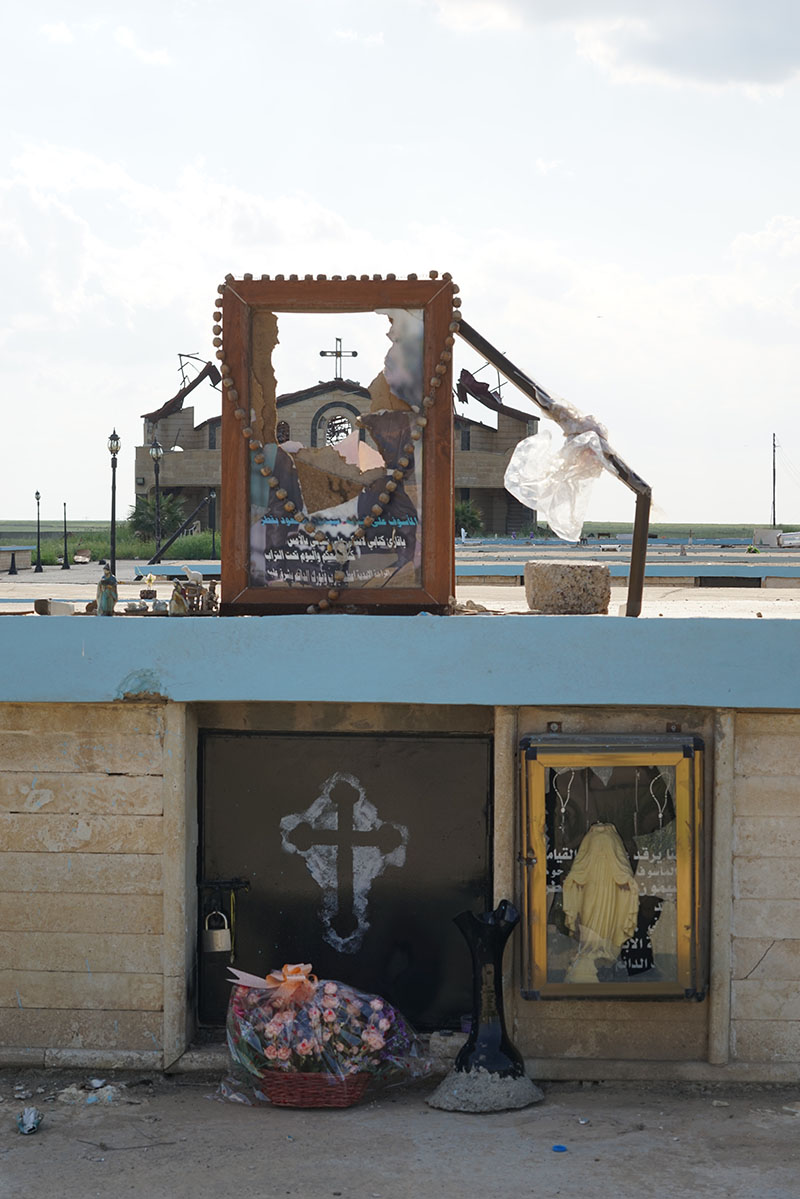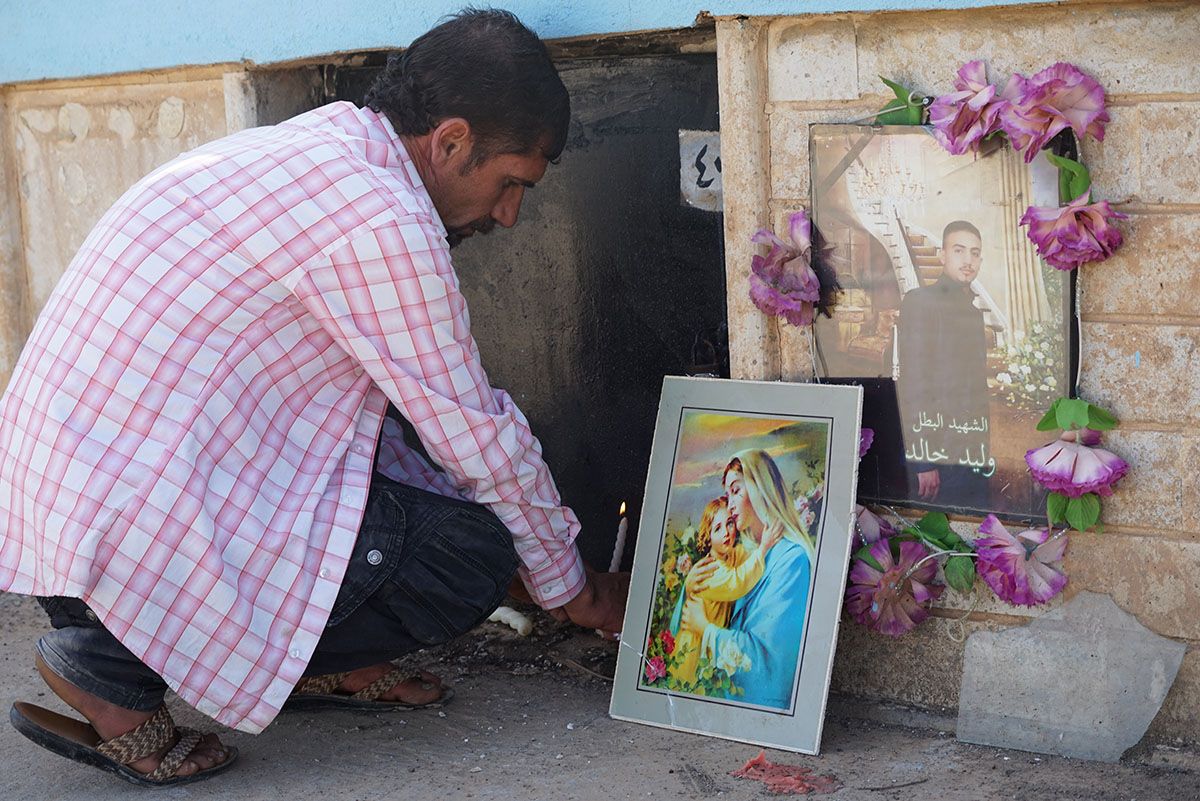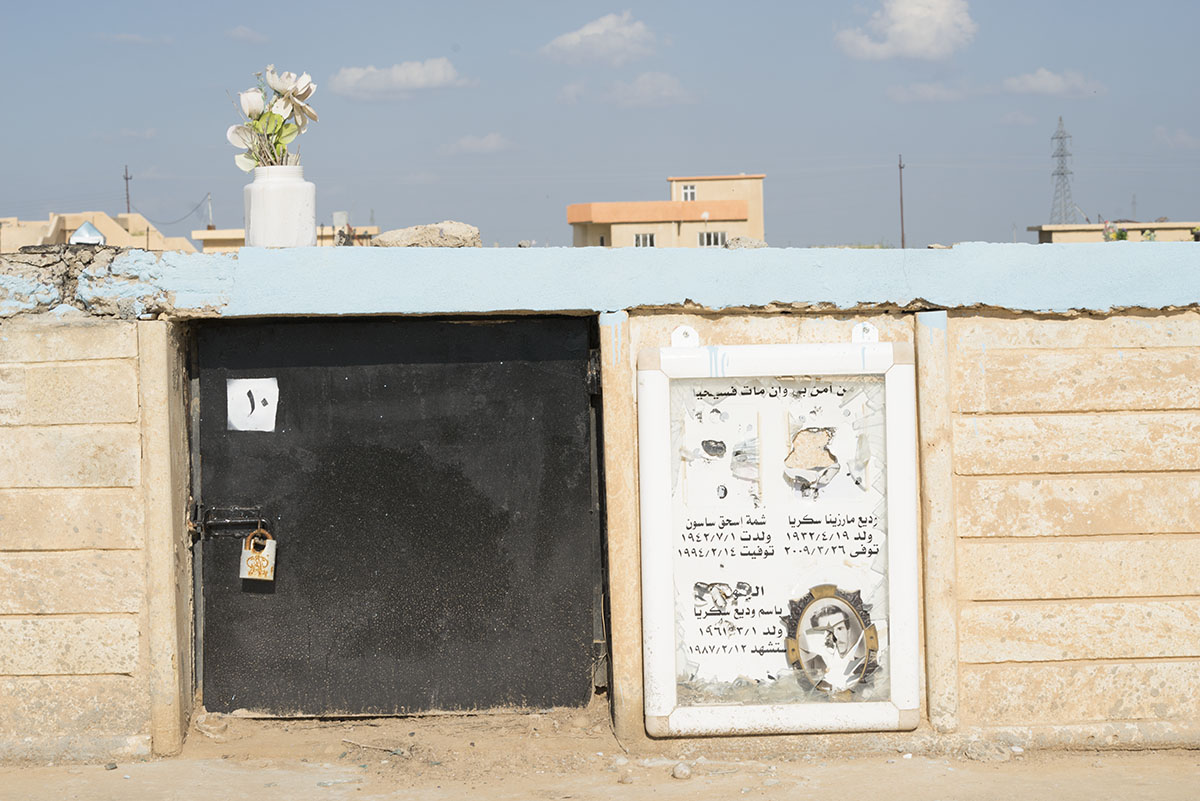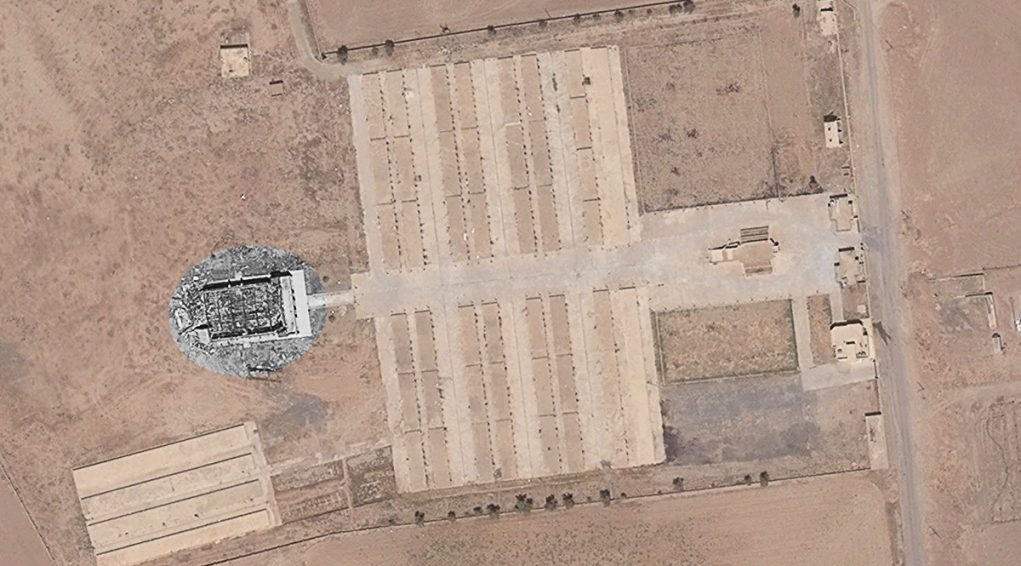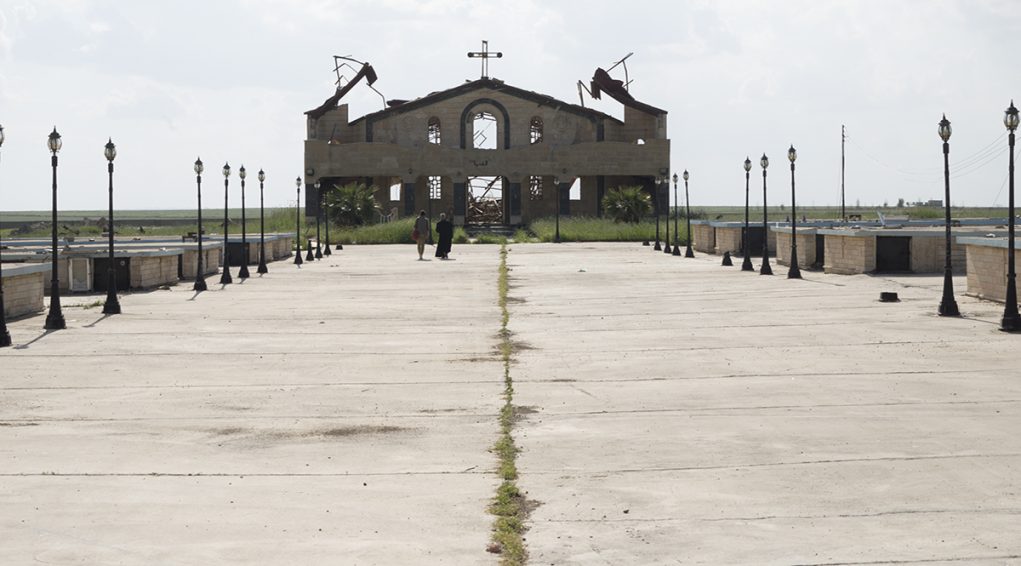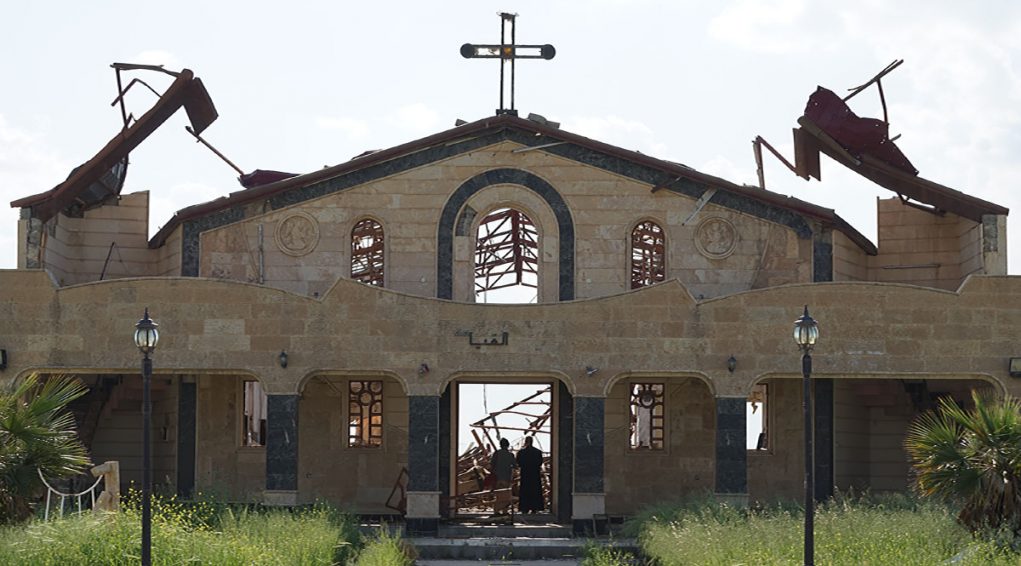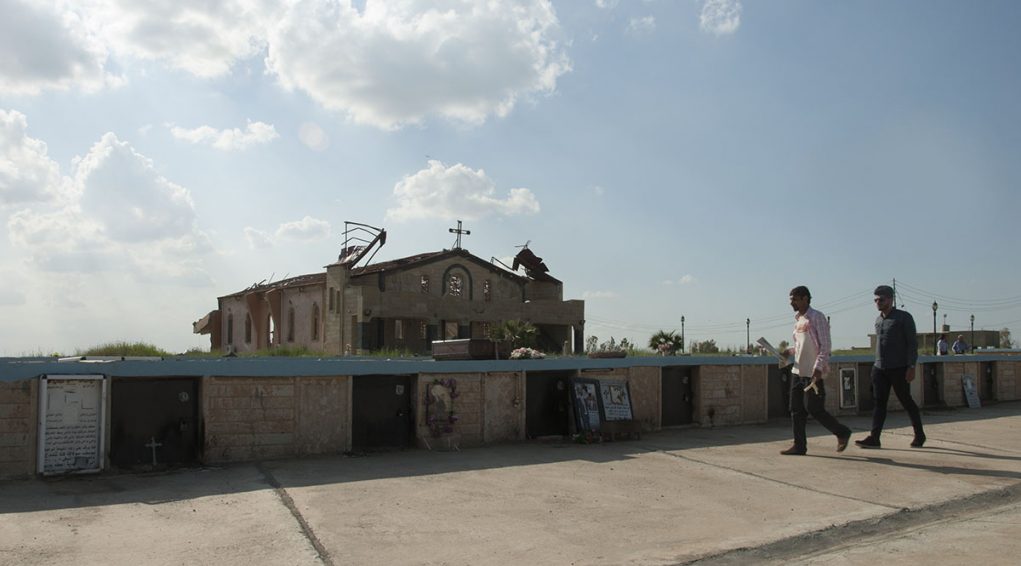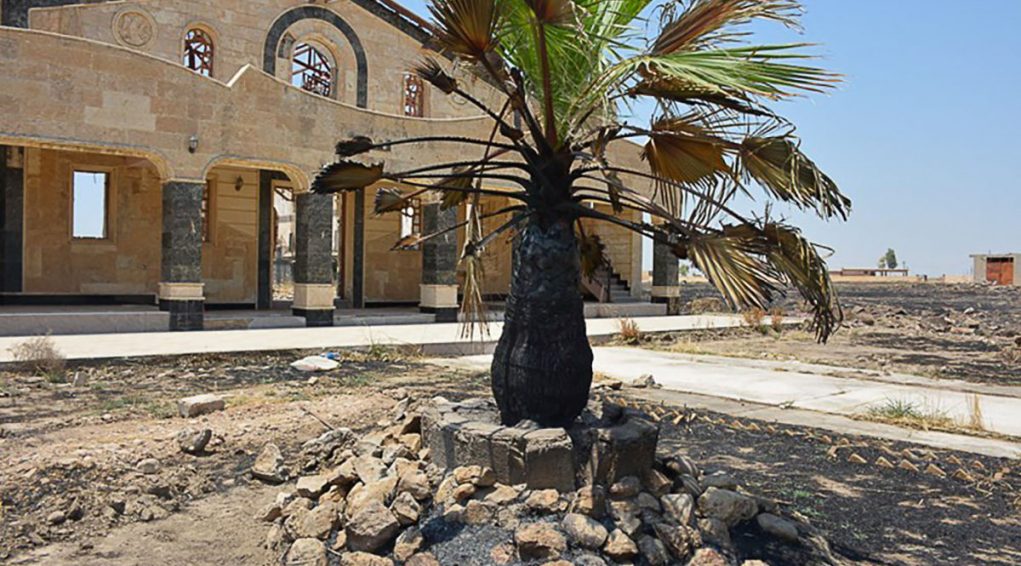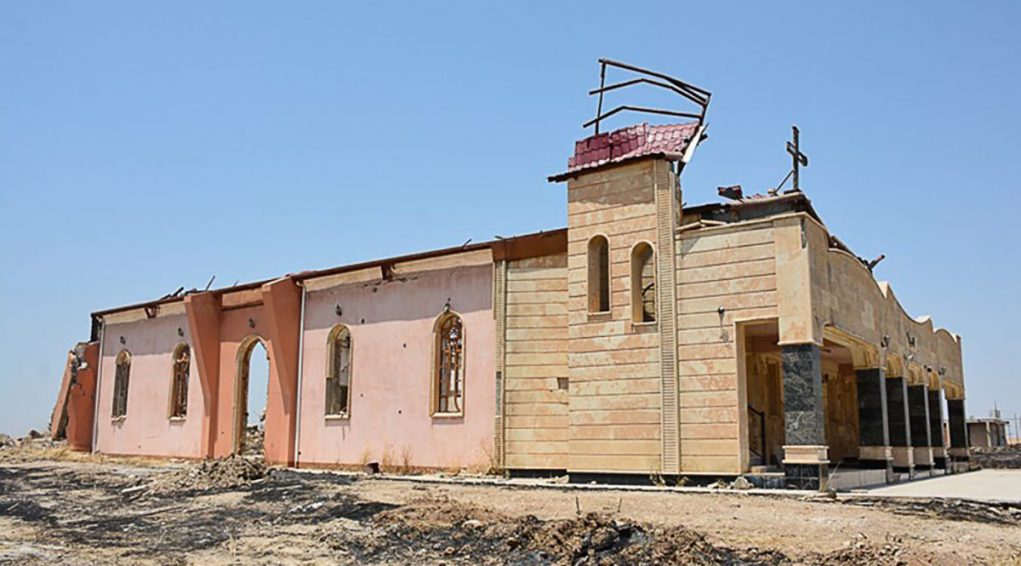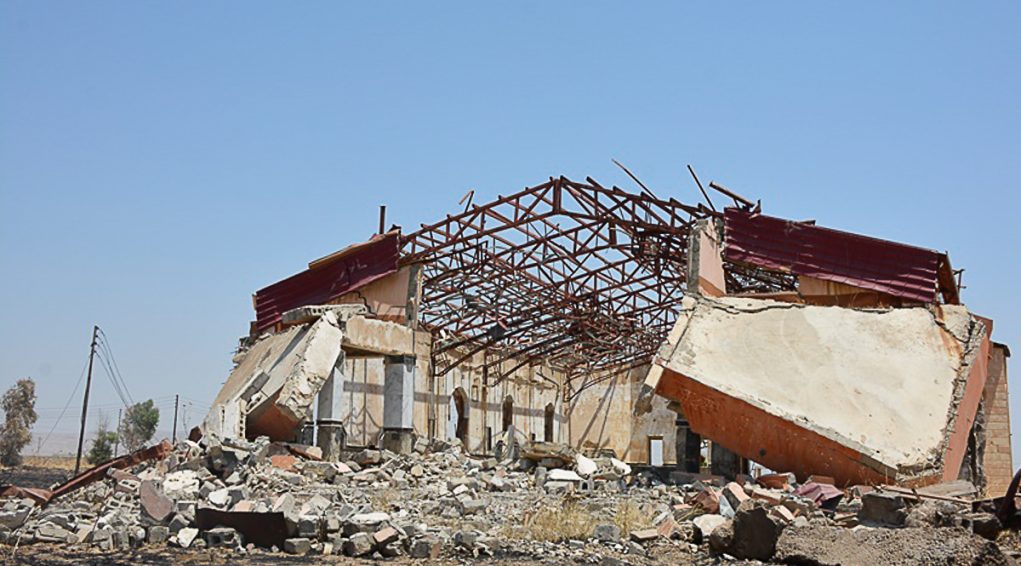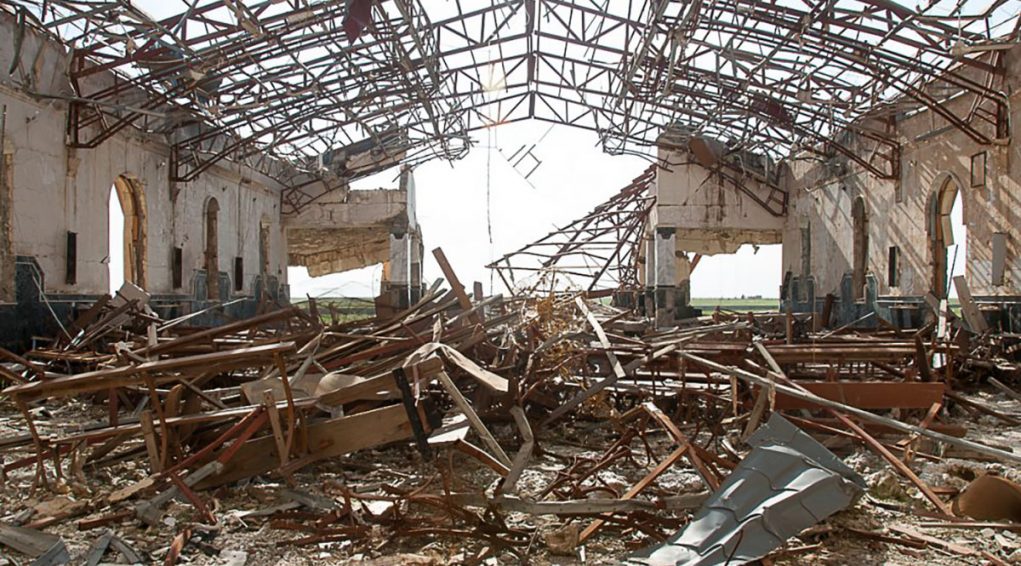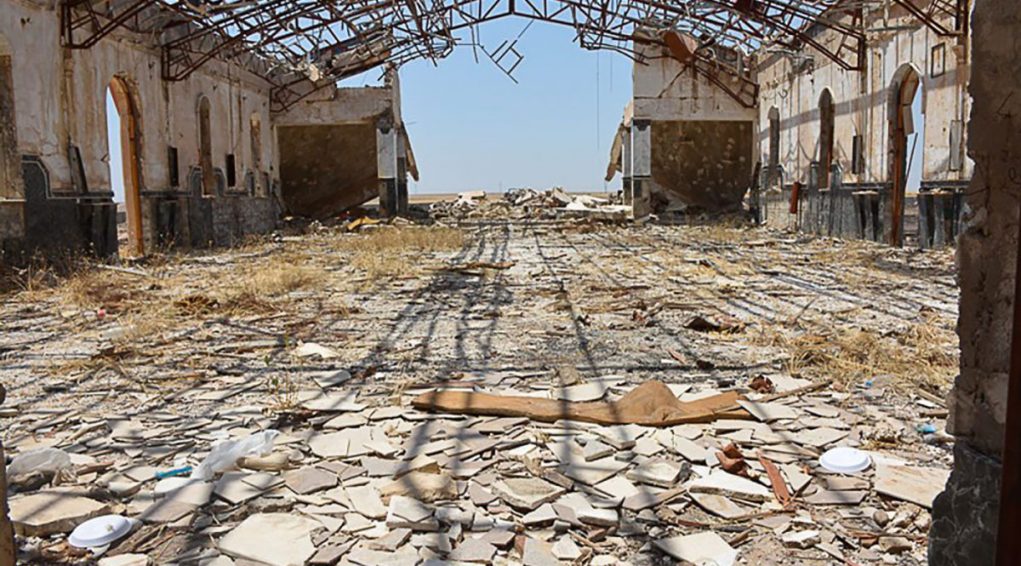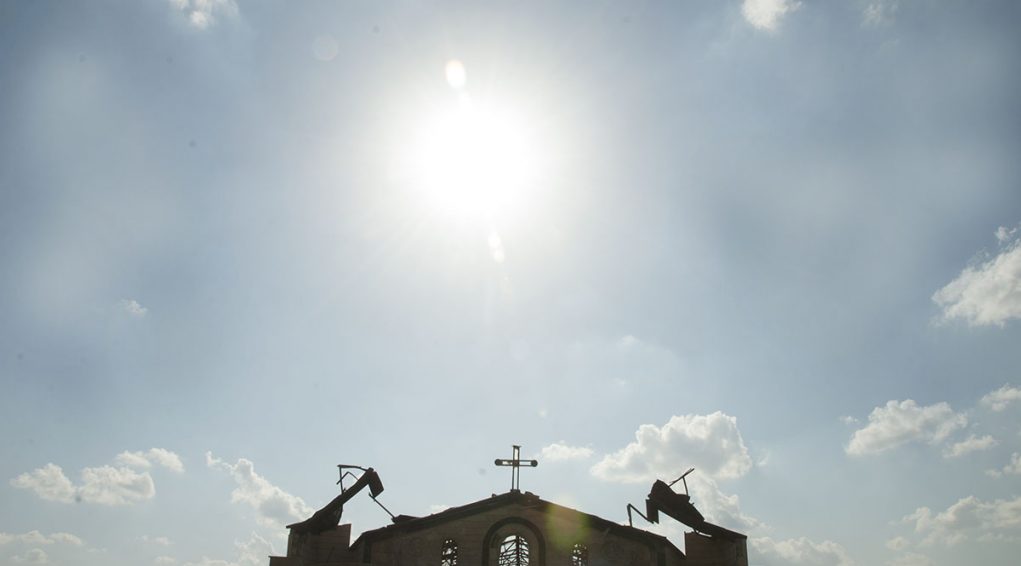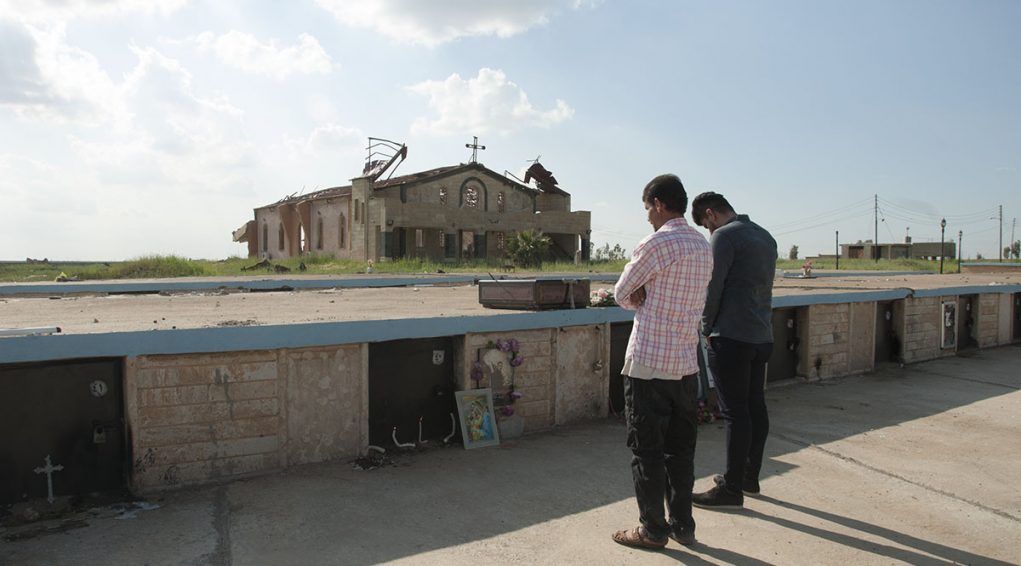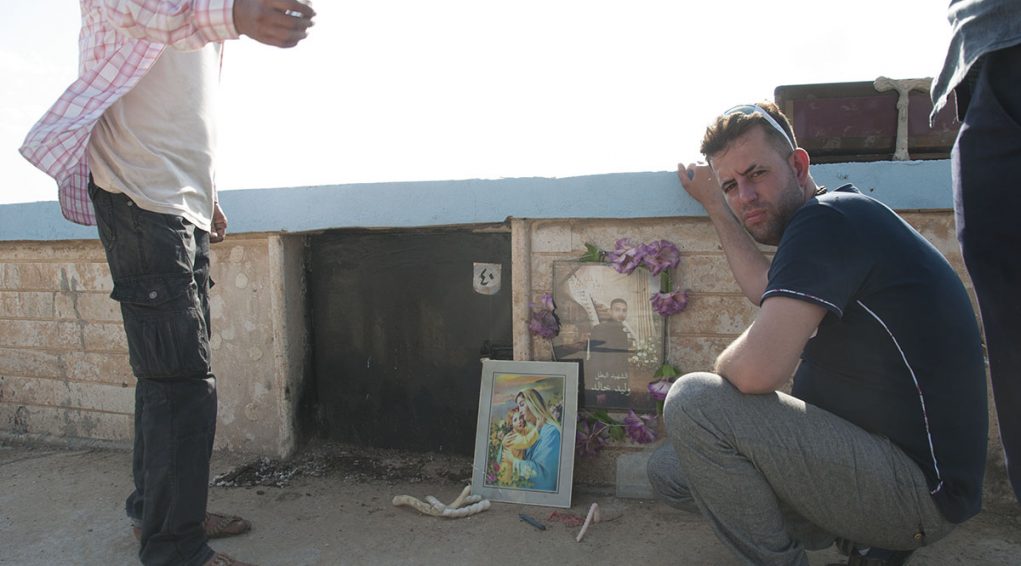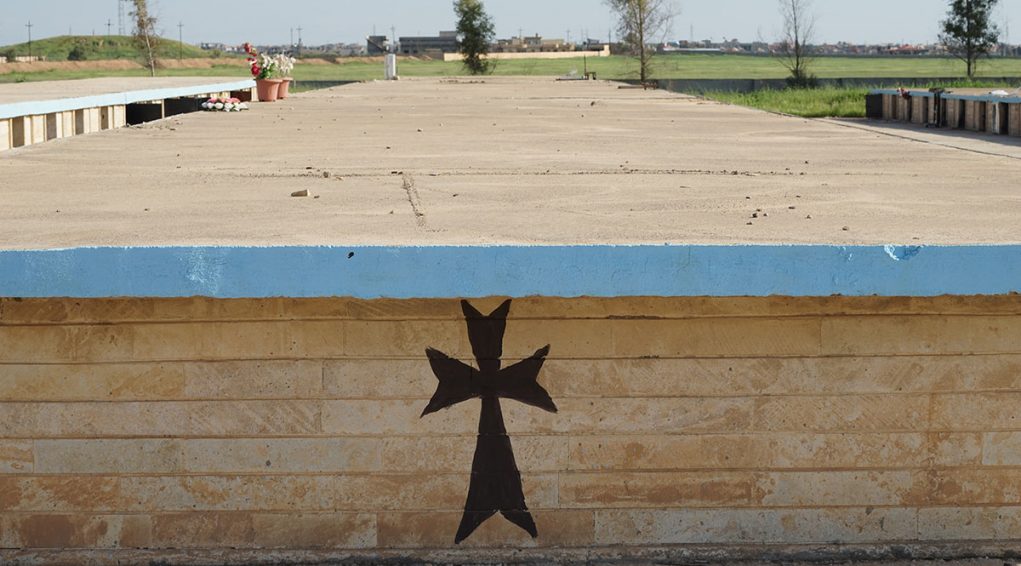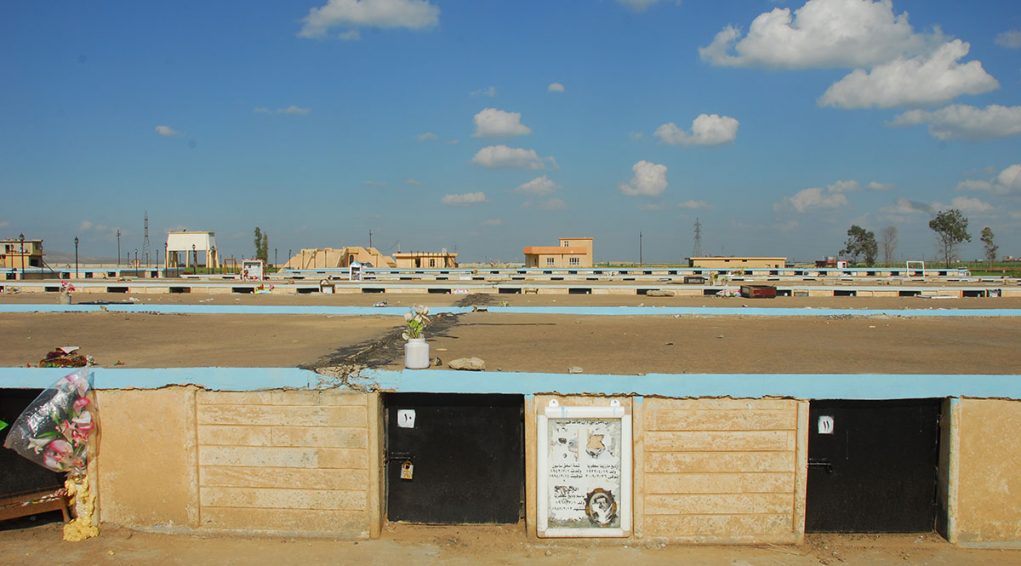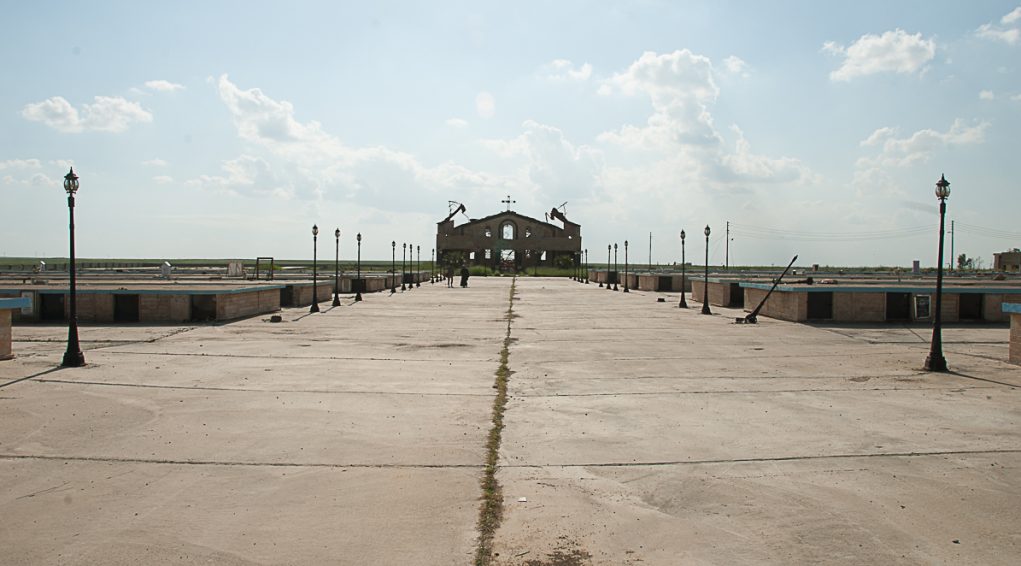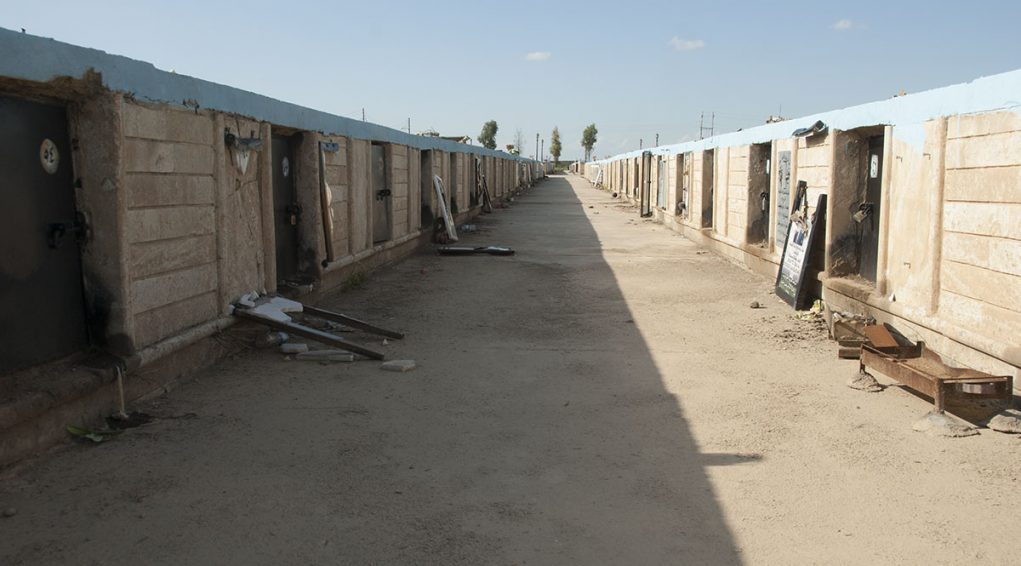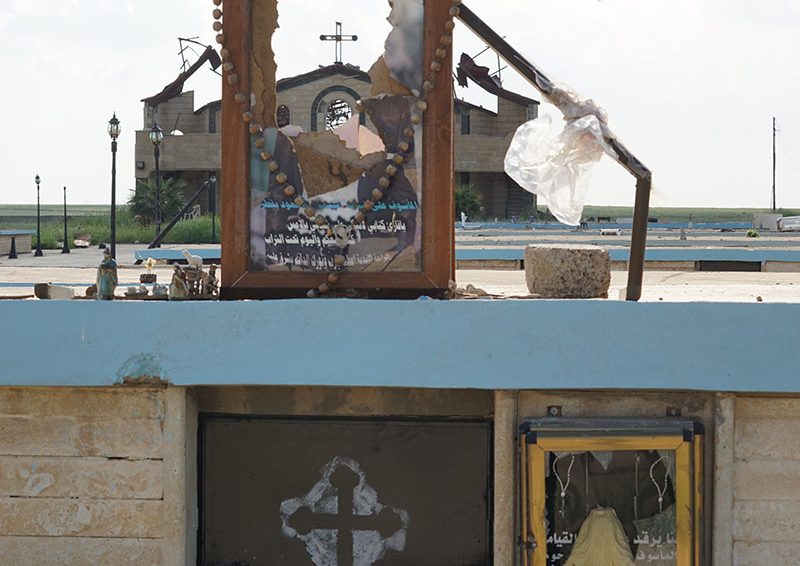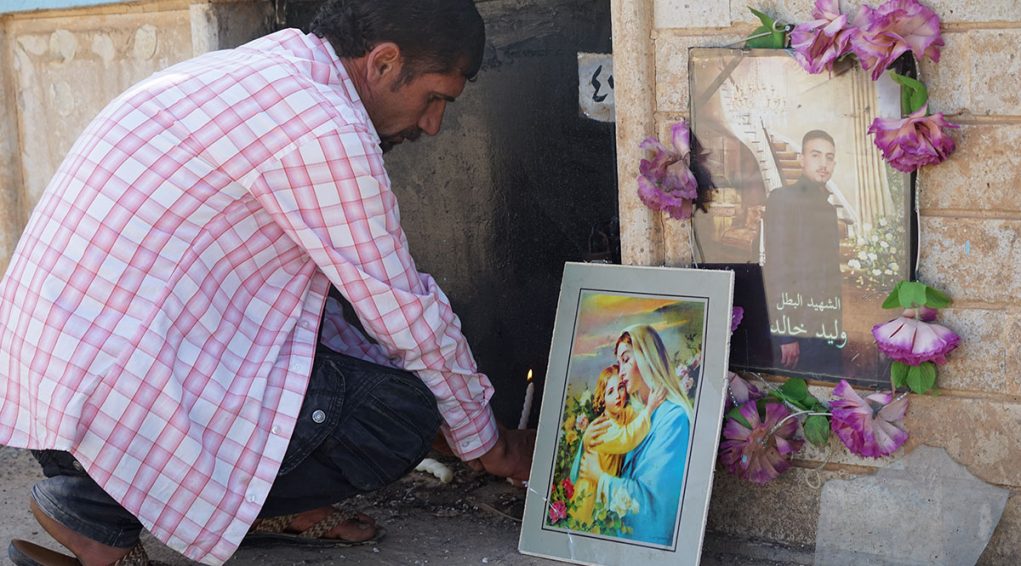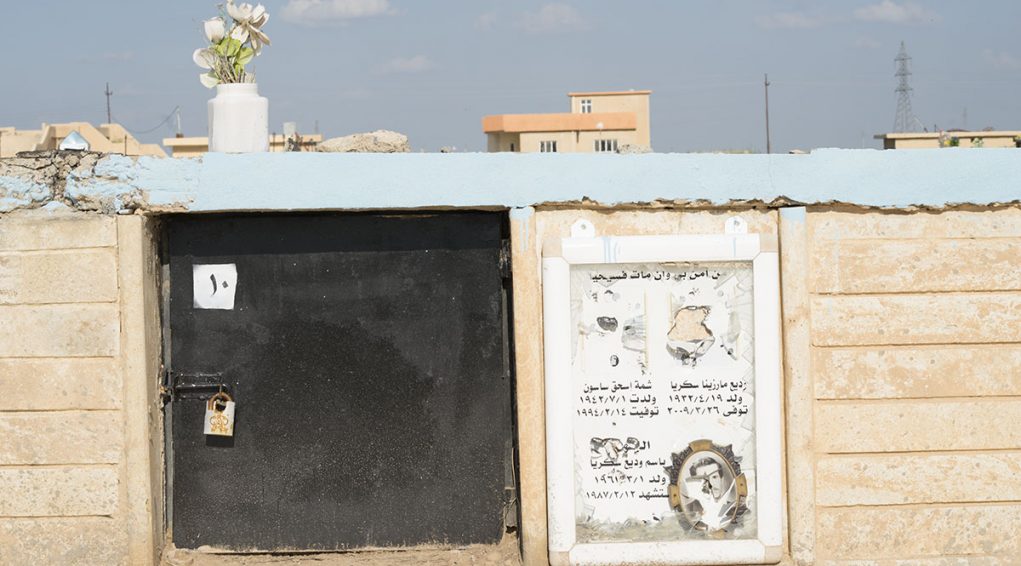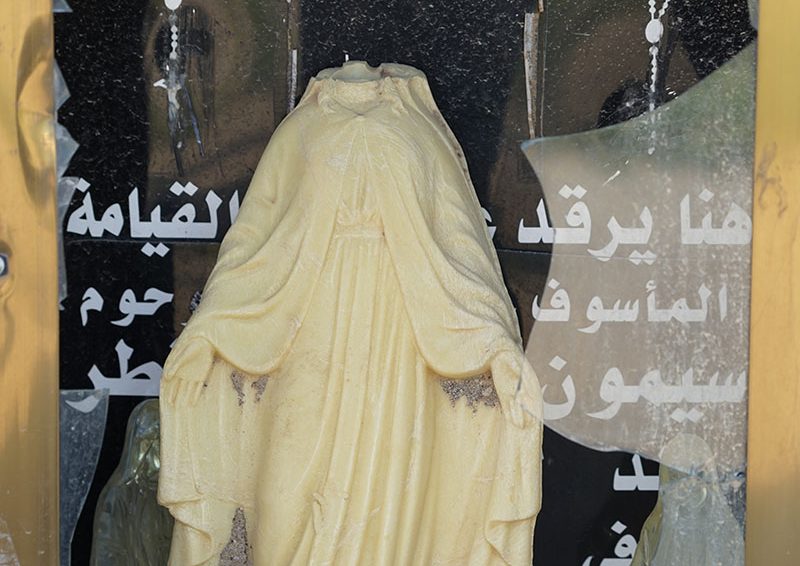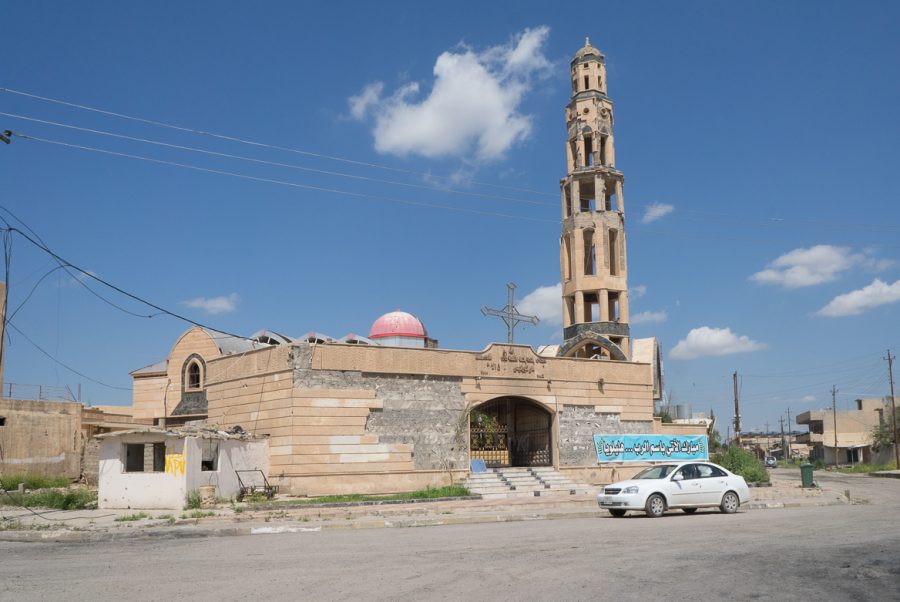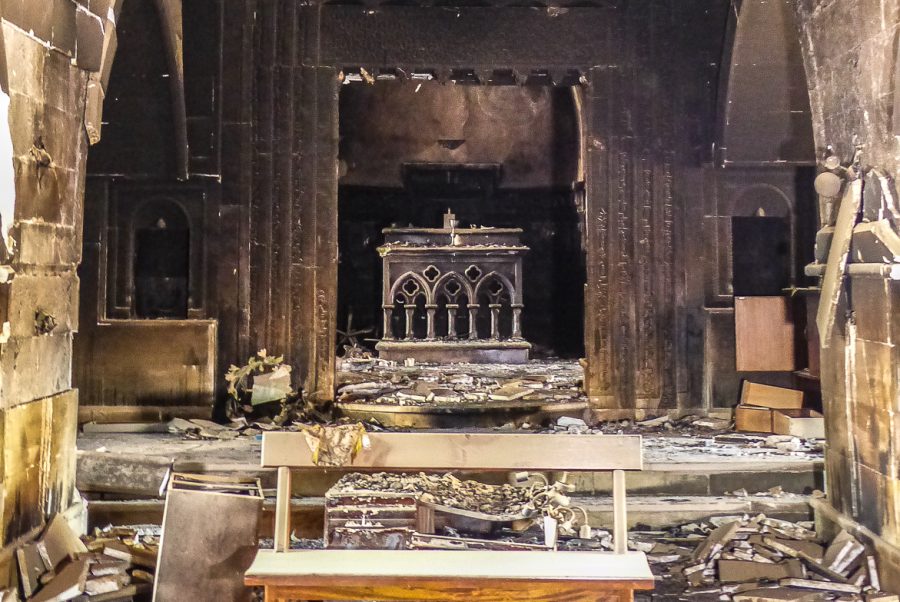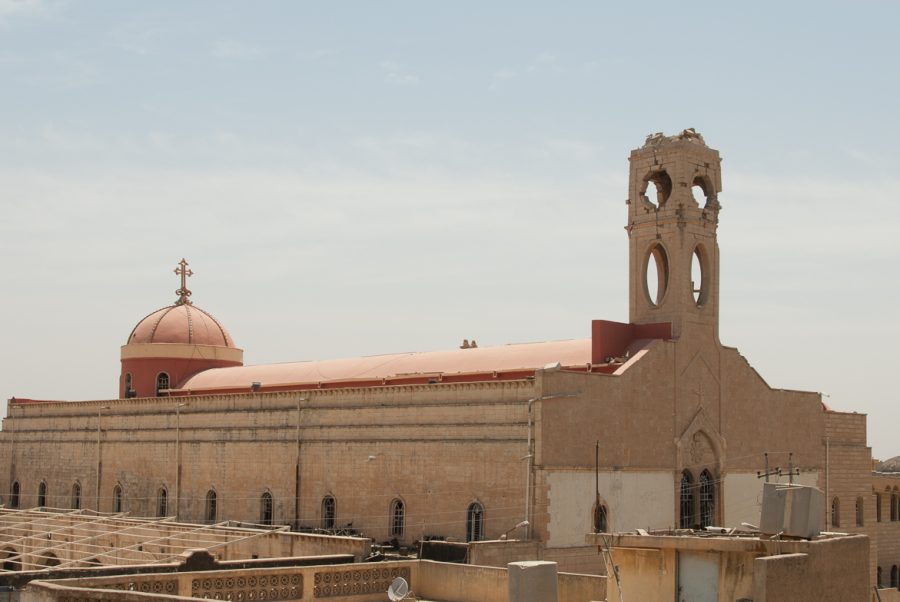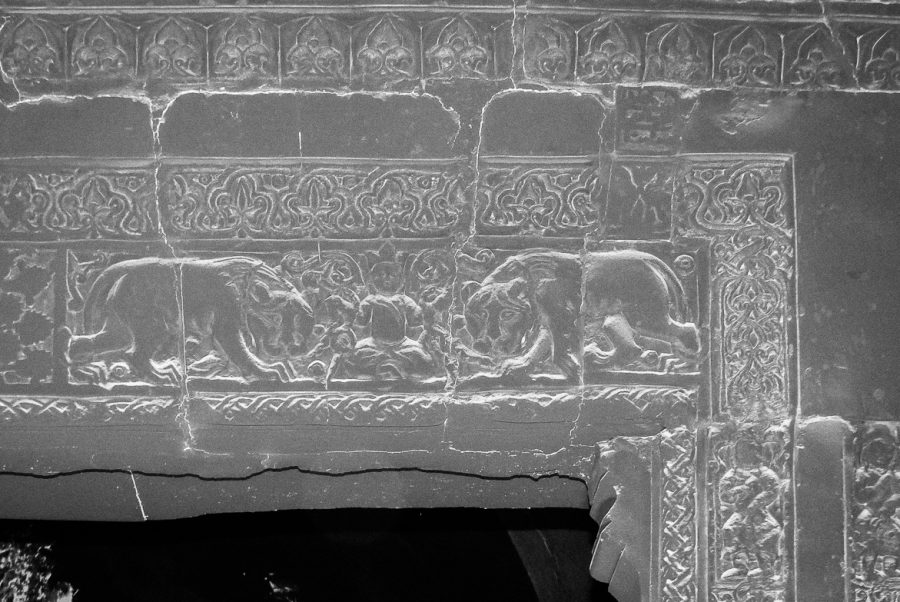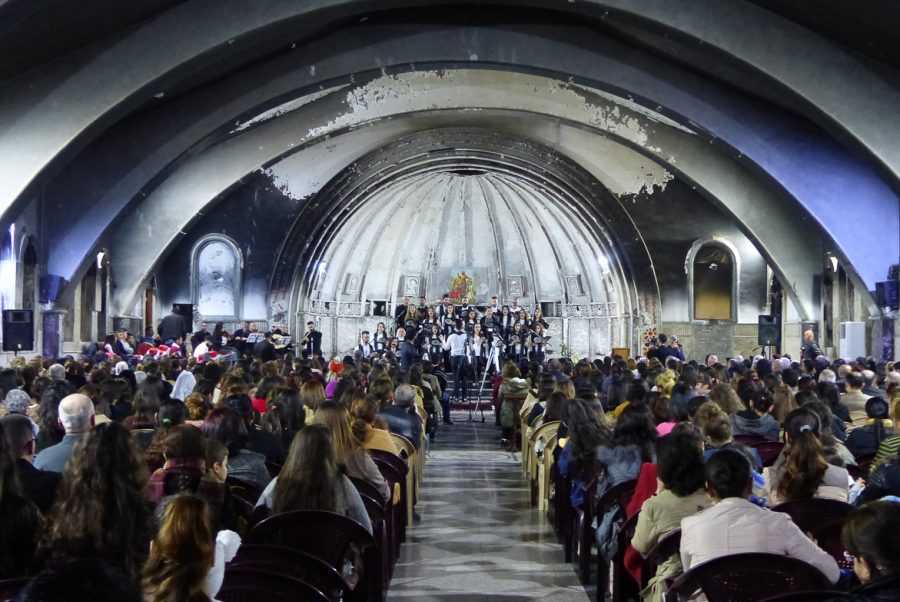The Church of the Resurrection in Baghdede (Qaraqosh)
The Church of the Resurrection and cemetery in Baghdede (Qaraqosh) is located at 36°17’57.6″N, 43°22’21.3″E and 278 metres’ altitude.
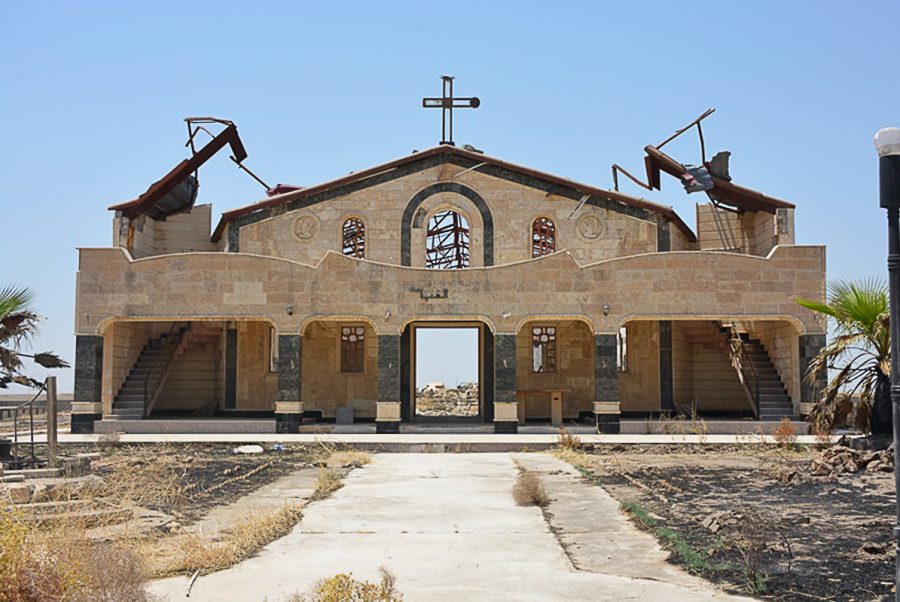
The Church of the Resurrection in Baghdede was consecrated on 16th February 2007. A mere six years later it was destroyed! ISIS is reported to have bombed the building on 9th October 2014.
The Church of the Resurrection is located in the middle of a large cemetery shared by the towns of Baghdede, Karamles and Bartella. It is an oecumenical church for use by all Christian denominations: Syriac-Catholic, Syriac-Orthodox, Chaldean and Armenian.
Almost all of the tombs in front of the church were desecrated.
| Pic : Facade of the Church of the Resurrection in Baghdede destroyed by ISIS. July 2019 © Ibrahim Lallo, Matty al Mache / MESOPOTAMIA |
Location
The church of the Resurrection (Al-Qyama, in Arabic) in Baghdede (Qaraqosh) is located at 36°17’57.6″N, 43°22’21.3″E and 278 metres’ altitude, 3 km north of the centre of Baghdede.
Located 30 km south-east from Mosul and 80 km west from Erbil, Baghdede is the largest city in the Nineveh plain, in the Al Hamdaniya district, 40 km upstream from the confluence of the Tigris river and the Great Zab.
The name Qaraqosh, which in modern Turkish means Black Bird, is quite frequently used but its other and original name, Baghdede (Baghdeda) in the Syriac language “probably comes from Bet Khudaydad which combines both semitic (Bet) and Persian (Khudaydad) origins [and which] means the place, the house given by God”[1] and this is once again the name most commonly used.
In the heart of the Syriac plain, Baghdede was a spiritual beacon, considered to be the world capital of the Syriac-Catholics, before ISIS attacked, which led all the inhabitants to flee overnight from August 6th to 7th 2014. Since the liberation of the town and the return of its inhabitants since April 2017, the city has progressively become a key focus of the Syriac and Christian revival in the Nineveh plain and Mesopotamia.
_______
[1] Source Jean-Marie Mérigoux, O.P., in “L’Orient chrétien dans l’empire musulman”, Collection Studia Arabica III, Editions de Paris, 2005.
Short history of Christianity in Baghdede
According to the tradition, Christianity entered the Nineveh plain and the city of Baghdede at the end of the 4th century or the beginning of the 5th century. More likely, sources argue that evangelisation began in the 7th century. “The village was first Nestorian[1], then around 615 [it] became Monophysite.[2] In the 11th and 12th centuries, many Christians from Tikrit, before being forced to convert to Islam, left Tikrit and settled in Baghdede. In 1743, Nader Shah’s troops besieged the area, plundered Baghdede and destroyed the churches. At that time, the villagers escaped to Mosul and took part in the defence of the town.”[3] Former Syriac-Orthodox see of the archbishopric, it is by the end of 18th century that the village became Catholic.
The city of Baghdede still today has several ancient Syriac-Catholic and Orthodox churches. All were violated, sullied, plundered, even burned down by ISIS, throughout the 24 months it occupied the city. Despite the damage and destruction sustained, some of these churches have resisted in the face of the invading forces and the passage of time and testify to a distant past.
_______
[1] Author’s note: Church of the East.
[2] Author’s note: Syriac-Orthodox
[3] Source Jean-Marie Mérigoux, O.P., in “L’Orient chrétien dans l’empire musulman”, Collection Studia Arabica III, Editions de Paris, 2005.
A visible Christian heritage
Although the reliability of demographic statistics can be considered as a problem, due to successive wars, to never-ending mass movements of population and to the absence of proper census, nevertheless, we can consider that at least 40,000 to 50,000 people used to live in Baghdede (Qaraqosh) before ISIS attacked in July 2014. Nearly 90% of the inhabitants in Baghdede were Syriac-Catholics, the remainder were Chaldean, Syriac-Orthodox and Armenian-Apostolic. To this must be added thousands of displaced people (5,000 to 13,000), mostly from Baghdad or Mosul who came to settle in Baghdede from 2003 on, fleeing the crimes of the Islamist and organised crime groups which arose after the collapse of the Iraqi State structures. Before 1980, this city was said to be exclusively Christian. But afterwards, Muslim families progressively settled, as part of the campaign of Arabisation of the Nineveh plain implemented by Saddam Hussein.
History of the church of the Resurrection in the cemetery of Baghdede
The church of the Resurrection in Baghdede is located in the middle of a large cemetery shared by the towns of Baghdede, Karamles and Bartella.
This large church was consecrated on 16th February 2007 by Monsignor Basile Georges Casmoussa, former Syriac-Catholic archbishop of Mosul and Monsignor Michael Jamil, with numerous priests from the towns of Baghdede, Karamles, Bartella and Bashiqa, attended by large numbers of worshippers, under the patronage of the Syriac-Catholic Patriarch of Antioch and the whole of the East, Ignacius Joseph III Younan.
The Church of the Resurrection in Baghdede has an oecumenical vocation. It can be used by all Christian denominations: Syriac-Catholic, Syriac-Orthodox, Chaldean and Armenian.
On the eve of the 21st century, the construction of the Church of the Resurrection was not only intended to embody the Christian revival in the Nineveh plain (in the same way as the new Mar Behnām and Mart Sārah church in Baghdede, consecrated in 2008) despite the war and persecution, but also to stand as an architectural manifesto of Christian unity.
Primarily dedicated to funeral services and other commemorative services, the Church of the Resurrection was seldom used, despite thousands of Christians displaced from Baghdad and Mosul settling in Baghdede.
News of the church of the Resurrection in the cemetery of Baghdede
In the night of 6th – 7th August 2014, ISIS invaded the Nineveh plain and the town of Baghdede, causing 150,000 Christians to flee to Iraqi Kurdistan. During the two years that Baghdede was occupied, the Islamist occupiers ransacked, pillaged and burned houses and churches to the ground.
Just six years after its consecration, the church of the Resurrection was destroyed. Local Iraqi sources claim that ISIS bombed the building on 9th October 2014. The roof was blown up. Only the metallic structure remained. The wall of the facade and the side walls were still standing but were severely damaged. Inside, everything was blown to smithereens, leaving only rubble behind.
Furthermore, almost all of the tombs in front of the church were desecrated. The statues of the Virgin Mary had their heads removed, the portraits of the deceased were thrown to the ground and broken, the doors to the funeral chambers were broken down and the bodies removed.
Monument's gallery
Monuments
Nearby
Help us preserve the monuments' memory
Family pictures, videos, records, share your documents to make the site live!
I contribute
